

essay on world peace
Category: Essays and Paragraphs On November 22, 2018 By Mary
World peace
World peace can be referred to as the state of people from all countries in the world being happy and living harmoniously with each other.
World peace creates one international community that can concentrate on greater issues that are affecting the planet like climate change.
When countries work together, they benefit their citizens since they can freely move from one country to another for employment, education or tourism.
Importance of world peace
- World peace leads to increased globalization . Globalization is the act where people from different countries are able to interact freely with each other in various aspects.
- World peace also leads to the promotion of tourism . With peace, people are freer to tour any country of their choice without fear of violence.
- World peace also contributes to cultural exchanges . People are able to interact freely with each other and they can learn different cultures from other people.
- World peace also contributes to more developed economies . This is because people are able to carry out both domestic and foreign investments without fear of the risk of future violence.
- World peace also contributes to the unification of people to fight unfair vices. People are able to speak with one voice to get rid of vices like racism, religious discrimination and gender inequality.
- World peace also contributes to the reduction of wars . Warring countries or internal nation conflicts can be reduced if world peace existed. War is the main cause of human suffering in the world.
- With world peace, you are also assured of increased freedom of people . People get more freedom whether they are from different religions, race or country. This promotes global cohesion.
How to achieve world peace
- We can achieve world peace through having international bodies that will ensure that every nation upholds world peace. Such a body is United Nations and other world organizations that ensure every country has the responsibility of promoting peace.
- We can also achieve world peace through upholding democracy . The main cause of world violence is dictatorship. When countries have the freedom to vote, they are able to choose the right leaders who are peace friendly.
- World peace is also achieved through globalization . When globalization is encouraged, countries will uphold peace since they will avoid going into war with countries that have economic ties with them.
- We achieve world peace when there is equal representation of nations in international bodies. This will ensure that no nation is oppressed and no nation is left behind. When some nations are not represented, it creates inequality which may stir violence.
- World peace can also be achieved by raising awareness of the importance of world peace. Nations can create awareness to their citizens by teaching them on the benefits that they will get when they have peaceful coexistence with other nations.
- World peace can also be achieved by sharing the country’s wealth equally . This is by giving equal opportunities to all and not overtaxing the poor. This will reduce the cases of rebel movements.
World peace is very important in the growth and prosperity of the entire global community. This is because with world peace, we are able to have more social cohesion and interactions that are beneficial to everyone.
United Nations and World Peace Essay
- To find inspiration for your paper and overcome writer’s block
- As a source of information (ensure proper referencing)
- As a template for you assignment
United Nations is an international organization that unites world countries in the common goal to ensure peace and human rights. Even thought it was formed after the Second World War, its peacekeeping efforts have been somewhat limited, as has been proven by a great amount of wars, civil upraises and terrorist acts all over the world.
The United Nations was formed with a great and honorable purpose of keeping peace on the planet. Superpowers have found it their duty and immediate obligation to join the common efforts in stopping violence and human rights violations. One of the major points present in the rules of United Nations is that it will “…first of all, seek a solution by negotiation, enquiry, mediation, conciliation, arbitration, judicial settlement, resort to regional agencies or arrangement, or other peaceful means of their own choice” (Baylis, 313).
The interesting fact is that United Nations admits the use of force in some instances, if necessity demands violence. It is obvious that not all conflicts can be resolved peacefully but if the primary duty of UN is to make sure peace is kept globally, then determining actions must be taken. The nations that are involved in the organizations have enough political and manpower to unite in the withdrawal of all weapons.
It seems pointless for UN forces to make their presence merely visible, in a country where open military violence is taking place. One of UN’s goals is to not interfere and get involved in any violence, but it is able to stay a neutral observer while people, just steps away, are firing at each other.
If the organization presents itself as a world peacemaker than why some countries are not allowed to join? “It has proved to be impossible to reach agreement on new permanent members” (Baylis, 315) but how can anything be done if UN calls something “impossible”? If this cannot be achieved then what is possible? If the world leaders with their superior intellect cannot come to agreement and find a way to make it possible, then how can regular public be expected to keep peaceful?
The fact is that no matter how high and morally correct UN’s goals might be it is still bound by rules and politics that cannot allow certain things. The limitations that exist, clearly illustrate the human nature of the organization. It is not a secret that there were and still are a number of missions that have failed on many levels.
One out of a number examples is the crisis that took place in Rwanda (Sitkowski, 123). Not only the UN forces were killed and injured but the resolution was not achieved to any degree. It is seems strange that genocide and civil wars, as well as rebellions against governments, are taking place and the peacekeeping organization is not able to achieve any cessation of violence.
The rules and policies produced by the United Nations are not centered on a global involvement in de-weaponizing countries, as everyone is full of fear that a group of terrorists will be able to overtake a country that is unarmed. But if this is the case, then the governments should work on devices that will partially paralyze the enemy without significant harm to a person’s health.
There is no doubt that there are more people in the world who want peace and so, if United Nations allowed for everyone wanting to stop violence to join, people could be given designated authority to make sure peace is kept in their community. The decentralization of government would ensure that local authorities take control of any violent outbreaks.
The function of United Nations is representative of the want of people to reach world peace. It is a very respectable cause and a lot has been accomplished but the amount of countries and people participating in peacekeeping is too small, compared to those who upset the order. More countries must be allowed to join, to unite the efforts in fighting violence and preventing wars.
Works Cited
Baylis, John. The Globalization of World Politics: An Introduction to International Relations. New York, United States: Oxford University Press, 2010. Print.
Sitkowski, Andrzej. United Nations Peacekeeping . Westport, United States: Greenwood Publishing Group, 2006. Print.
- The Role of Canada in Peacekeeping and Its Image
- Anthropology: Peacekeeping Issues in Gaza Region
- UN and Its Advocacy Groups
- The War-Prone and Chaotic 21st Century
- U.S. and the Good Neighbor Policy
- The Formation of the European Union
- Why Is the UK’s Relationship With the Rest of the EU So Difficult?
- Somali Piracy: Recommendations for Ending
- Chicago (A-D)
- Chicago (N-B)
IvyPanda. (2019, April 14). United Nations and World Peace. https://ivypanda.com/essays/united-nations-and-world-peace/
"United Nations and World Peace." IvyPanda , 14 Apr. 2019, ivypanda.com/essays/united-nations-and-world-peace/.
IvyPanda . (2019) 'United Nations and World Peace'. 14 April.
IvyPanda . 2019. "United Nations and World Peace." April 14, 2019. https://ivypanda.com/essays/united-nations-and-world-peace/.
1. IvyPanda . "United Nations and World Peace." April 14, 2019. https://ivypanda.com/essays/united-nations-and-world-peace/.
Bibliography
IvyPanda . "United Nations and World Peace." April 14, 2019. https://ivypanda.com/essays/united-nations-and-world-peace/.
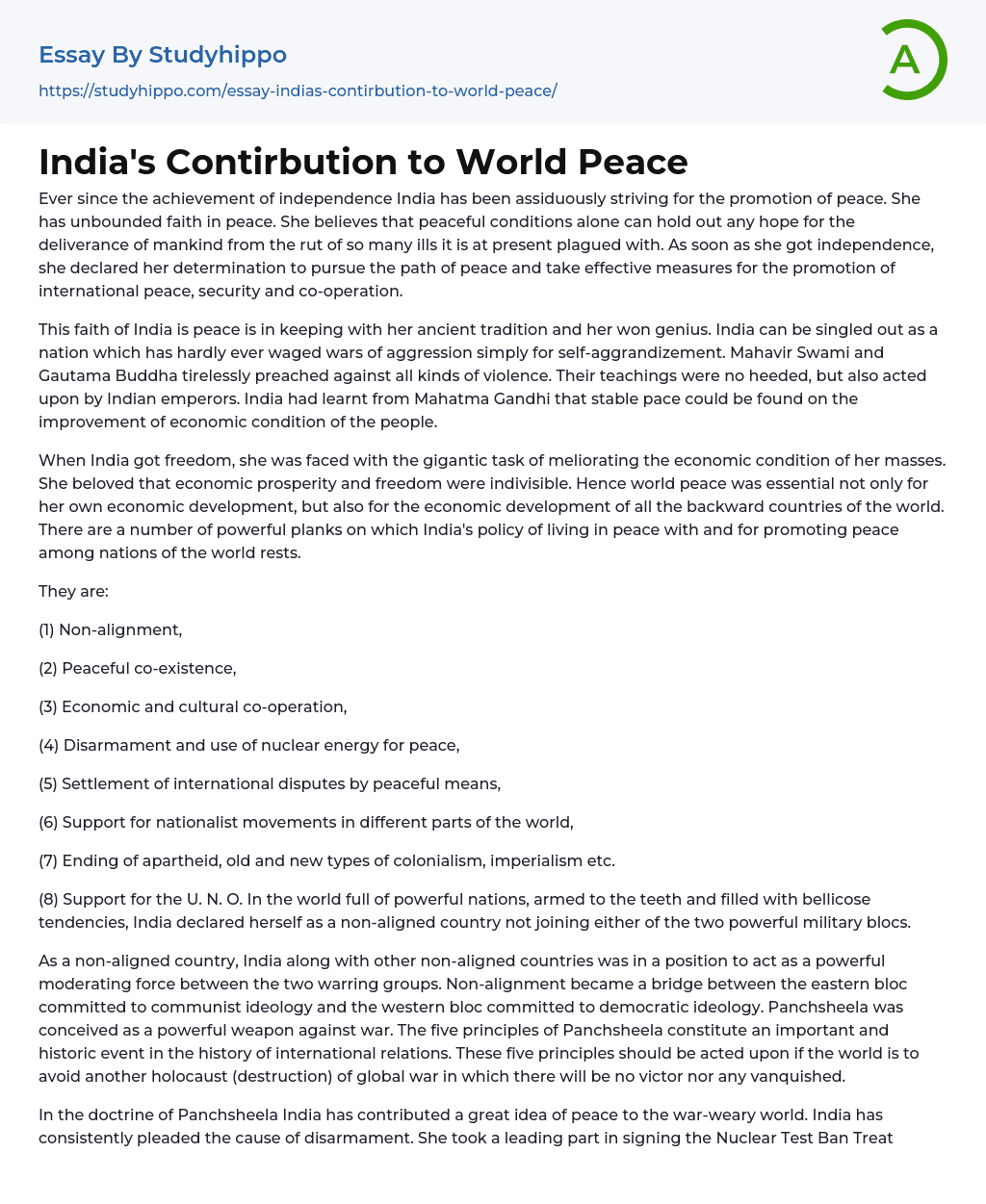
India’s Contirbution to World Peace Essay Example
- Pages: 8 (1969 words)
- Published: November 21, 2016
- Type: Case Study
India has consistently worked towards promoting peace after gaining independence. The country firmly believes in the power of peaceful conditions to improve mankind's state and resolve different issues. Upon gaining independence, India clearly declared its priority for peace and commitment to actively promote international peace, security, and cooperation.
India has a strong belief in peace, which aligns with its historical tradition and inherent character. In contrast to other countries, India seldom involves itself in wars for expansion or personal gain. The teachings of Mahavir Swami and Gautama Buddha strongly denounced violence, and Indian emperors not only heeded but also adhered to their guidance. Mahatma Gandhi further reinforced the idea within India that enhancing the economic well-being of its citizens is key to attaining lasting peace.
Upon gaining independence, India faced the immense task of enhancing the economic condition of its people. India firmly believed that econ
omic prosperity and freedom were inseparable, acknowledging the importance of global peace for both its own progress and the advancement of other underdeveloped nations. India's policy is to live peacefully and promote peace among nations, which is backed by numerous influential principles.
The following are:
Non-alignment is a concept that refers to not aligning with any specific group or allegiance.
(2) The concept of peaceful co-existence.
(3) Economic and cultural cooperation,
(4) The disarming of nuclear weapons and the utilization of nuclear energy for peaceful purposes,
Settlement of international disputes without resorting to violence and aggression is the preferred approach.
(6) Assistance provided to nationalist movements across various regions globally,
(7) The conclusion of apartheid, as
well as the emergence of new forms of colonialism and imperialism.
(8) India declared itself as a non-aligned country, not joining either of the two powerful military blocs, in a world full of powerful nations armed to the teeth and filled with bellicose tendencies. Support for the U. N. O. remains crucial.
As a non-aligned country, India had the opportunity to mediate between opposing groups during that time. Non-alignment acted as a connection between the eastern bloc, which was communist-oriented, and the western bloc, which was democratic-oriented. Panchsheela was created as a strong deterrent against war with the goal of avoiding another global conflict and its devastating aftermath. It is essential to implement these five principles in order to prevent a destructive war where no one emerges victorious.
India's doctrine of Panchsheela has been a significant contribution to the world, promoting peace. Over time, India has consistently advocated for disarmament and actively participated in global initiatives like signing the Nuclear Test Ban Treaty in 1963. Moreover, India supports the use of nuclear energy for constructive purposes while refraining from manufacturing military atomic devices despite having the capability to do so. This decision is noteworthy considering their communist neighbor's detonation of multiple atomic devices, which poses a potential threat to India's freedom and territorial integrity.
India strongly advocates for the use of peaceful methods, including adjudication, arbitration, and mediation, to address international issues. This approach has been demonstrated by India in its own conflicts. An example of this is when India accepted the Colombo Proposals after its conflict with China, aiming to prevent future wars and peacefully resolve disputes. Additionally, in 1965,
India agreed to abide by the decision of an international arbitration court regarding its Kutch dispute with Pakistan. The belief held by India is that any form of colonialism, racial discrimination, or imperialism poses a significant threat to global peace.
India's foreign policy is focused on acknowledging the equal sovereignty of all individuals worldwide and promoting nations' rights to political freedom. This commitment has been apparent from the start, as India has actively backed nationalist movements in Asia and other areas. Pt. Jawahar Lal Nehru, in particular, arranged an Asian Relations Conference to raise international awareness for this cause. Moreover, India has consistently offered significant assistance to the United Nations in their endeavors to resolve global conflicts like world wars.
India has contributed troops to United Nations peacekeeping missions in the Congo, Gaza Strip, and Cyprus. Additionally, India has responded to the United Nations' ceasefire request during its conflict with Pakistan. India views the United Nations as an important means of reducing global tension. A key aspect of India's role in fostering international understanding is its successful synthesis of non-conflicting ideologies. Through democratic socialism, India has achieved a harmonious combination of democracy and socialism.
Furthermore, the message conveyed is that there is enough space in the world for diverse political systems to coexist harmoniously. This dialogue effectively showcases India's significant role in promoting global peace and fostering positive interactions between nations. At present, the world is on the brink of chaos, like dry hay waiting for a match to ignite it into flames. We should trust that India will persist in its pursuit of worldwide peace.
India's Contribution To World Peace
Throughout history, India has been acknowledged as a peaceful nation, firmly committed to global peace and harmony. It has largely steered clear of war and violence, with only occasional deviations from this path. Even in modern times, India continues to uphold the principles of peace and harmony. Its mythology revolves around the idea of peace and the ongoing fight against disruptive forces. The heroes in ancient epics such as Ramayana and Mahabharata were tasked with eradicating evil and reinstating peace. These epics offer a detailed portrayal of ancient cities.
Throughout history, various spiritual leaders such as Buddha, Mahavir, Shankaracharya, and others have spread the message of truth and encouraged love and harmonious living with all beings. Their teachings focused on peaceful coexistence and the promotion of peace and harmony. In more recent times, figures like Mohandas Karamchand Gandhi also championed peace and non-violence.
The teachings of Mahatma Gandhi on non-violence and non-violent methods of agitation were internationally acclaimed. Influential figures like Martin Luther King and Nelson Mandela practiced these teachings and fought for independence, following in his footsteps. Even after his death, Gandhi's teachings and messages continue to emphasize the importance of world peace and brotherhood. It is not surprising that he was given the title "Mahatma." In a speech, Jawaharlal Nehru, one of his disciples, once remarked that children are the buds of our country who will blossom into fragrant, bright, and colorful flowers in the future.
Children's Day is celebrated nationwide on his birthday due to his exceptional love for children. Additionally, throughout his life, he advocated for peace, harmony, and truth. Notably, Mother Teresa and Baba Amte
also made significant contributions in promoting peace. Both individuals dedicated their lives to assisting the impoverished and destitute. Mother Teresa founded an organization called Missionaries of Charity with the aim of offering food and shelter to those in need. Her efforts were recognized when she was awarded the Nobel Peace Prize in 1979.
Baba Amte, an eminent individual, devoted his entire life to the prevention and rehabilitation of individuals suffering from leprosy. The Human Rights Commission recognized his efforts and honored him with the Human Rights Award in 1988, as well as the Magsaysay Award in 1985. India has contributed to global peace by deploying peacekeeping forces and troops through the U.N.O to various locations worldwide. While not all missions were successful, a majority achieved their goals, and some are still active in parts of Africa. Furthermore, India is categorized as one of the Third World Countries.
India is actively involved in the Non-Alignment movement and has endorsed the Non-Proliferation treaty, which reiterates its dedication to abstain from endorsing or participating in nuclear warfare. However, India conducted the Pokhran tests in 1998 as a means of showcasing its nuclear capabilities while still emphasizing its commitment to peace. Pakistan, India's neighboring country, has consistently been involved in conflicts with India since the tumultuous partition of 1947. After years of war, India took initiative by extending its hand for friendship, brotherhood, peace, and harmony.
India’s desire for peace and harmony is demonstrated here. However, despite India’s significant contributions to global peace, many regions still experience violence and discord. Personally, I believe that the world requires more individuals like Gandhi and films like Lage Raho
Munnabhai, which have brought Mahatma Gandhi’s message of truth and peace, known as 'GANDHIGIRI', to the entire nation. We should all embrace the essence of peace and brotherhood in order to heal the world and create a better future for generations to come.
India has taken steps to uphold global peace by taking into account both national and international considerations. These international concerns encompass peace, human rights, justice for all, co-existence, and global economic development. After World War II, the world was split into two opposing blocs led by the U.S.A. and the former Soviet Union. This era also witnessed the emergence of newly independent nations due to worldwide decolonization.
The newly independent countries were opting to join one of the two blocs. In this scenario, India, also a recently independent country, understood that dividing the world into two blocs would harm not only India but also global peace and development. The Indian government chose not to align with any power bloc and announced a foreign policy of non-alignment. Non-alignment essentially means not becoming part of any bloc. However, non-alignment does not indicate that India will stay neutral and refrain from expressing opinions on important global matters.
India's non-alignment policy enables the country to maintain independence and not align with any major powers, allowing it to have its own stance on international issues and pursue foreign policy independently. Yugoslavia and Egypt also joined India in this commitment to non-alignment. As a result, India's independent foreign policy has made a significant contribution towards international peace and cooperation. Although initially adopted by only a few countries in the fifties, non-alignment had become a prominent
movement by the nineties.
The growth of the Non-aligned Movement (NAM) is closely connected to global decolonization. Despite the end of the cold war and the dissolution of the Soviet Union, NAM remains relevant today. It represents a group of States with shared interests and independent foreign policies. NAM is currently the second largest political coalition worldwide, after the United Nations.
India's commendable commitment to fostering global peace and cooperation can be seen through its foreign policy and the Non-Aligned Movement (NAM). It not only addresses security and international understanding challenges but also pays attention to social and economic issues with global impacts. In today's interconnected world, developments in one country can have profound implications for others. India consistently strives to maintain peace in South Asia by maintaining strong relations with neighboring nations.
The India-Pakistan Declarations have periodically emphasized peace and understanding between the two countries. The signing of the Tashkent Declaration in 1966 is a notable example, in which both nations acknowledged the necessity of resolving disputes through negotiation. Additionally, in 1972, an agreement was reached between India and Pakistan as another peaceful attempt to settle their disagreements.
In 2000, India's Prime Minister and notable Indians visited Pakistan as a goodwill gesture, known as 'Bus Diplomacy,' in an effort to maintain peace and understanding. In the following year, Pakistan's President and delegates reciprocated by visiting India for the 'Agra Summit,' where they met with the Indian delegation led by the Prime Minister. However, despite these initiatives, lasting peace between the two countries was not accomplished. India has always made efforts to uphold peaceful relations with its neighboring nations as well
as other countries worldwide.
After the September 11, 2001 terrorist attacks in the U.S.A., India promptly condemned them and provided aid to the American people and government. However, on December 13, 2001, India experienced a comparable attack on its Parliament. Fortunately, the terrorists responsible were apprehended and eliminated. As an active member of the South Asian Association for Regional Cooperation (SAARC), India actively promotes comprehensive economic cooperation among the dynamic nations of South Asia.
- Atoms for Peace Analysis Essay Example
- Axis of Evil: Evidence for Bush's Claim
- Why the Versailles Treaty Failed to Bring Peace and Stability Essay Example
- Realism and Neo-Realism in International Relations Essay Example
- Peacebuilding And Intercultural Dialogue Theology Religion Essay Example
- President Reagan's Strategic Defense Initiative: I Essay Example
- The Potential for a U.N. Peacekeeping Force in Kos Essay Example
- The League of Nations Was a Great Source for Peace in the 1920's Essay Example
- War and Peace in Mindanao Essay Example
- Paragraph on Angelina Jolie Essay Example
- A Separate Peacetopics Essay Example
- Effects of Foreign Interference on Nicaragua Essay Example
- The commercial arbitration and mediation center Essay Example
- WebQuest: The Israeli-Palestinian Conflict Essay Example
- The Process of Reducing or Removing Restrictions on Foreign Trade Essay Example
- World Peace essays
- Absolutism essays
- Appeal essays
- Bourgeoisie essays
- Contras essays
- Corporate Governance essays
- Corruption essays
- Democracy essays
- Democratic Party essays
- Developed Country essays
- Dictatorship essays
- Elections essays
- European Union essays
- Federalism essays
- Foreign essays
- Foreign policy essays
- Gentrification essays
- Hillary Clinton essays
- Income Tax essays
- International Relations essays
- John Marshall essays
- John Stuart Mill essays
- Left-Wing Politics essays
- Liberty essays
- Military essays
- Monarch essays
- Monarchy essays
- Political Corruption essays
- Political Party essays
- Political Science essays
- President Of The United States essays
- Public Service essays
- Red Cross essays
- Reform essays
- Republic essays
- Revenge essays
- Social Security essays
- Sovereign State essays
- State essays
- Supply essays
- Terrorism essays
- United Nations essays
- World Trade Organization essays
- American Civil War essays
- Atomic Bomb essays
- Attack essays
- Cold War essays
- Crimean War essays
- Diplomacy essays
- Emilio Aguinaldo essays
Haven't found what you were looking for?
Search for samples, answers to your questions and flashcards.
- Enter your topic/question
- Receive an explanation
- Ask one question at a time
- Enter a specific assignment topic
- Aim at least 500 characters
- a topic sentence that states the main or controlling idea
- supporting sentences to explain and develop the point you’re making
- evidence from your reading or an example from the subject area that supports your point
- analysis of the implication/significance/impact of the evidence finished off with a critical conclusion you have drawn from the evidence.
Unfortunately copying the content is not possible
Tell us your email address and we’ll send this sample there..
By continuing, you agree to our Terms and Conditions .
(Stanford users can avoid this Captcha by logging in.)
- Send to text email RefWorks EndNote printer
India and the world : essays on geoeconomics and foreign policy
Available online, at the library.

SAL3 (off-campus storage)
More options.
- Find it at other libraries via WorldCat
- Contributors
Description
Creators/contributors, contents/summary.
- * Introduction
- *1. Shifts and Shocks: Understanding Geoeconomics and Strategy* Post-Cold War Geoeconomics* The Geoeconomics of the Asian Financial Crisis* Geoeconomics of the Trans-Atlantic Financial Crisis* India, G-20 and the G-4
- *2. The Geoeconomics of a Multipolar World* The Next, Apart from China* From Geoeconomics to Geopolitics* Structural Shifts and Economic Shocks: Drivers of Strategic Change* Knowledge Power and Demographics* Fiscal Capability of the State* Global Economic Competitiveness* Access to Markets and Natural Resources
- *3. India and the Geoeconomics of the Trans-Atlantic Financial Crisis* Policy Impact of the Triple Crises of the 1990s* Closing the Two Gaps* Banking and Finance* Fiscal Policy* India and the Global Slowdown: New Vulnerabilities* Globalisation, Geopolitics and India's Grand Strategy* The Re-hyphenation with Pakistan* The G-2 Challenge* Crisis Management, Regional Stability and Implications for India-US Relations
- *4. The Economic Imperative to Indian Foreign Policy* Planning and Foreign Relations* Non-Alignment and Mixed Economy* The Post-Cold War-Post-Liberalisation Era* Economic Inter-dependence and International Relations* Conclusion
- *5. The Political Economy of Post Cold War Indian Foreign Policy* Impact of Successful External Liberalisation* The United States and Major Powers* India and Immediate Neighbours* Asymmetric Trade Liberalisation* India and Wider Asian Neighbourhood: East Asian Community* South-South Cooperation* New Thinking on Globalisation* Inclusive Globalisation* Challenges to the Manmohan Singh Doctrine
- *6. Realism in India's Economic Multilateralism*'Realistic Restructuring' of the Bretton Woods Institutions* Hedging its Bets on the Multilateral Trade Regime* The China Syndrome
- *7. The Influence of Business and Media on Indian Foreign Policy* The Influence of Business in Foreign Policy* Track Two Diplomacy* The Influence of Media in Foreign Policy* Conclusion
- *8. India's Economic Rise and South Asian Integration* Indian Sub-continent as an Integrated Economic System* Regional Cooperation and Institution Building in South Asia: P2P, B2B and G2G* SAARC as G2G: Institutions and Iconic Projects/Programmes* Building Blocks of B2B and P2P Cooperation* India as an Opportunity* A Summing Up
- *9. China and India: Bilateral Economic Relations and the Global Economy* Historical Background* From Inward to Outward Orientation* The New Bilateral Economic Relationship* Trade Deficit and Trust Deficit* Managing Competition and Cooperation* Opportunities for Regional Cooperation* The Multilateral System* Conclusion
- *10. The Geoeconomics of the GCC and Asia* The Changing Global Economy* The Gulf and Asia* Gulf Regional and Maritime Security: Role of Asian Powers.
- (source: Nielsen Book Data)
Bibliographic information
- Stanford Home
- Maps & Directions
- Search Stanford
- Emergency Info
- Terms of Use
- Non-Discrimination
- Accessibility
© Stanford University , Stanford , California 94305 .
- Ground Reports
- 50-Word Edit
- National Interest
- Campus Voice
- Security Code
- Off The Cuff
- Democracy Wall
- Around Town
- PastForward
- In Pictures
- Last Laughs
- ThePrint Essential

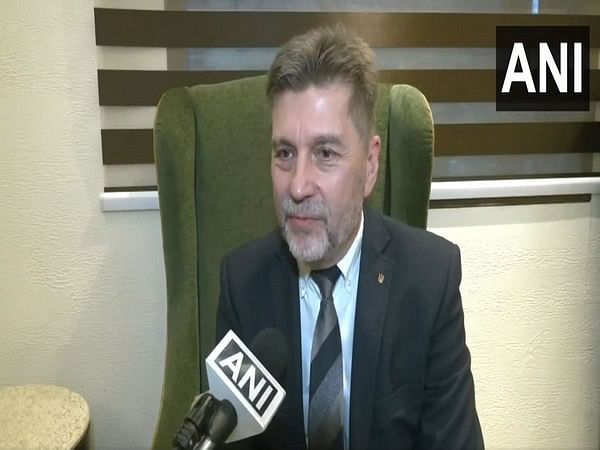
New Delhi [India], June 7 (ANI): Ukrainian Ambassador, Oleksandr Polishchuk on Friday highlighted India’s global standing as the leader of the Global South ahead of the peace conference in Switzerland aimed at helping chart a path toward peace in Ukraine and said that the war-torn nation need India in the peace-building process.
While speaking to ANI the Ambassador said, “We need India in the peacebuilding process in Ukraine because the Indian leadership, India’s presence at the summit will reinforce all of the diplomatic forces around the world. And definitely, we need to find a peaceful solution and we need to create stable and prosperous conditions in Ukraine.”
Ukraine is looking to strengthen international support for its peace plan at the upcoming global peace summit on June 15-16 in Switzerland, according to Kyiv Independent.
“Definitely India will be present. This is what the Prime Minister said a couple of weeks ago. He confirms that India will be present but the level of presence will depend on timing, logistics and parallel commitment,” said Polishchuk.
Ukraine President Volodymyr Zelenskyy on Thursday extended a warm invitation to Prime Minister Narendra Modi to visit Ukraine at “a convenient time”. The invitation came during a phone conversation between the two leaders, where Zelenskyy congratulated PM Modi on his recent election victory and wished for the swift formation of the government.
Further, the envoy also affirmed with a positive attitude that “it will be the first visit in the entire history of our relationship when the Prime Minister will visit Ukraine.”
“And I’m very much happy that my President just yesterday had a direct talk with Prime Minister Modi, and they agreed that we will continue to develop our cooperation, which is a very good sign that Prime Minister Modi says that India will increase the effort in peacebuilding process in Ukraine. So we expect that India will be present during the peace summit, which actually will start next week in Switzerland,” added the Ukrainian envoy.
In response to a question, on his role as an Ambassador in this war, he said, “We try to secure our people and you know that Russia heavily bombarding Ukraine, especially critical infrastructure in Ukraine, and we are very grateful that India is paying a lot of attention support of Ukraine and so that we will continue our new project.”
“Well I’m quite happy that well you have such logical sequence and stability in the line of the government of India and I hope that we will use this opportunity to increase the number of projects in support of Ukraine,” he added.
He also disclosed while speaking to ANI, that there could be possibly high-level visits between the two countries. He said, “It’s a very high probability, I should say. Definitely, yes. You probably remember that we had the visit of our foreign minister to India, and it was agreed that we would have the visit of the Minister of External Affairs to Ukraine. So…We’ll see. And we even have a bigger expectation.”
Following this he also congratulated PM Modi for winning a majority in the 2024 Lok Sabha elections and described it as it’s one of the biggest elections in the world.
“We are going to congratulate Prime Minister Modi and his team for such great achievement because it’s one of the biggest elections in the world. And he demonstrates his leadership. He demonstrates that he can consolidate the nation around his philosophy and his idea to make India an even more great country than it exists at the moment,” the ambassador said.
However in the recent Ministry of External Affairs briefing, MEA spokesperson Randhir Jaiswal said that India has received an invitation from the Swiss side, but the decision regarding participation is still pending.
“We have received an invitation from the Swiss side. we are yet to decide on participation,” said an MEA spokesperson.
Meanwhile, US Vice President Kamala Harris will travel to Switzerland next week to participate in a summit aimed at helping chart a path toward peace in Ukraine, the White House said.
China has indicated that it might not attend the Ukraine Peace Summit set to be held in Switzerland.
On being asked whether China has refused to participate in the Ukraine Peace Summit, Mao Ning said in a weekly press briefing that, China attaches great importance to Switzerland organizing the first Summit on Peace in Ukraine and has been in close communication with Switzerland and relevant parties on this since early this year. China always maintains that the international peace conference needs to meet the three important elements of recognition from both Russia and Ukraine, equal participation of all parties, and fair discussion of all peace plans.”
Following this, In May Russian Foreign Minister Sergey Lavrov ruled out his country’s participation in the summit.
While speaking in an interview with a local Russian news outlet, Sergey Lavrov said, “When our Swiss colleagues say they want to invite Russia to the first conference, they are not telling the truth. We will not participate in any events that promote Volodymyr Zelenskyy’s peace formula in one way or another.”
The summit is part of Ukraine’s ongoing effort to secure diplomatic support for its 10-point peace plan announced in November 2022, which includes the full withdrawal of Russian troops and accountability for war crimes committed by Russia.
Ukraine expects attendees at the summit to develop an action plan on three key aspects of its 10-point peace plan. The first point, free navigation, involves protecting port infrastructure in the Black Sea and global food security. The second focus is energy and nuclear security, which includes an end to strikes on Ukraine’s critical infrastructure. And the third focus will be the exchange of captives and the return of children illegally abducted to Russia.
The summit is the highest-level event yet in Ukraine’s “peace formula” initiative. It follows four lower-level conferences held since June 2023. (ANI)
This report is auto-generated from ANI news service. ThePrint holds no responsibility for its content.
Subscribe to our channels on YouTube , Telegram & WhatsApp
Support Our Journalism
India needs fair, non-hyphenated and questioning journalism, packed with on-ground reporting. ThePrint – with exceptional reporters, columnists and editors – is doing just that.
Sustaining this needs support from wonderful readers like you.
Whether you live in India or overseas, you can take a paid subscription by clicking here .
LEAVE A REPLY Cancel
Save my name, email, and website in this browser for the next time I comment.
Most Popular
Bjp lost 49 of 224 seats it won with over 50% vote share in 2019, dent in maharashtra, up & rajasthan, indian economy showing solid growth, but these must be new govt’s top 5 priorities to sustain momentum, will write to govt seeking review of new criminal laws if sc bar association wants me to, says sibal.
Required fields are marked *
Copyright © 2024 Printline Media Pvt. Ltd. All rights reserved.
- Terms of Use
- Privacy Policy

45,000+ students realised their study abroad dream with us. Take the first step today
Here’s your new year gift, one app for all your, study abroad needs, start your journey, track your progress, grow with the community and so much more.

Verification Code
An OTP has been sent to your registered mobile no. Please verify

Thanks for your comment !
Our team will review it before it's shown to our readers.

Essay on India
- Updated on
- Feb 7, 2024
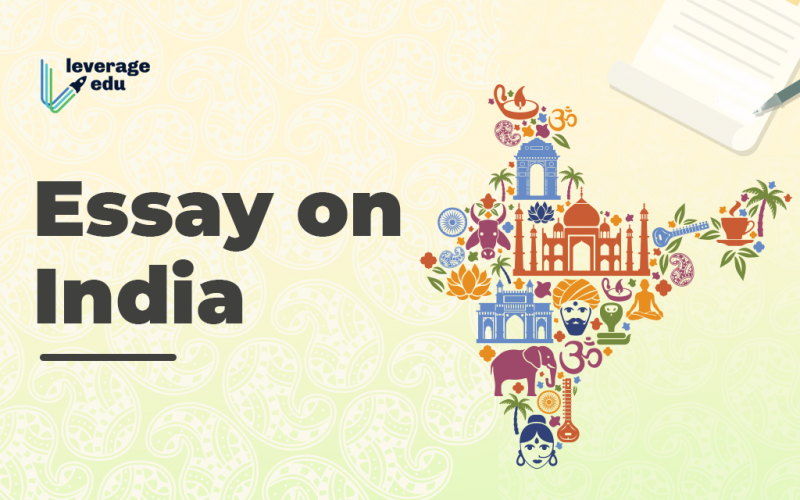
Essay writing is an important component of the English exam. It is designed to test your command of the English language and how well you are able to gather your thoughts and present them in a structure with a flow. To master your ability to write an essay, it is advisable to read as much as you can and practise on any given topic. In this Leverage Edu blog, we bring you a sample ‘ Essay on India ‘.
Also Read: Save Electricity Essay: Format & Samples
This Blog Includes:
Features that make india great, essay on india for class 6 to class 8, essay on india for class 9 to class 12.
- Festivals of India Essay (300 Words)
Essay on India (100 Words)
- Essay on India (200 Words)
Essay on India (300 Words)
Our country India is great and there a lot of things that contribute to the same. Some of those features are mentioned below:-
Political Divisions :- In India, political divisions are made by the government, so as to ensure the smooth functioning of the country.
Physical Features :- India has some of the best physical features including: The Northern Mountains, The Northern Plains, The Southern Plateau, The Great Indian Desert, The Island Regions, and The Coastal Plains.
Food :- Indian food is rich in taste because of the Indian spices. It is diverse as people of different regions have their own versions of food.
Diversity :- India has people of all religions, and each religion has its festivals. India is diverse no only its people, but also its festivities some of them are: Ganesh Chaturthi, Diwali, Dussehra, etc.
Here is an essay on India for Class 6th to 8th for approximately 250 words:
Around the globe, India is a representative of unity in diversity. India is a land of different cultures, castes, creeds, religions; despite the many differences we continue to live harmoniously. Indians are peace-loving and go out of the way to help people at times of peril. We believe in the motto, “Atithi Devo Bhava” which means our guests are our gods and are especially helpful and kind towards tourists visiting our nation. Our nation is a vibrant country that is home to hardworking people, rich flora and fauna and a marvellous heritage. A testament to the hardworking citizens, India is slowly and steadily growing to be one of the superpowers in the world.
Geographically, India is the 7th largest country in the world and has 28 states and 8 union territories. India is a colourful place with a tiger as our national animal, a lotus as our national flower, a peacock as our national bird and mango as our national fruit. Our national anthem is “Jan Gan Man” which was composed by Rabindranath Tagore and the national song is “Saare Jahan se acha“ which was composed by Muhammad Iqbal. Our land also hosts one of the 7 wonders of the world, the Taj Mahal. A thriving democracy, I am especially proud of India’s cultural heritage. Being a proud citizen of this country I hope to contribute to bringing India to newer heights and making it one of the most developed and safe countries in the world.
Also Read: Essay on Digital India
Here is an essay on India for Class 9th to 12th for approximately 400 words.
Festivals of India Essay (300 Words)
Festivals are an essential aspect of human life because they bring joy and break up the monotony of our daily routines. Festivals happen every month or two, and they allow us to get together and enjoy many facets of life. It fosters communal cohesion and strengthens ties between people of various backgrounds. Every country has its own set of festivals that are tied to its culture and religion. India, on the other hand, is a country with diversified culture, and it celebrates a variety of festivals throughout the year. In India, festivals are split into three categories: national, seasonal, and religious.
National festivals honour significant national events, personalities, and historical figures. Independence Day, Republic Day, Children’s Day, Earth Day, National Environment Day, Gandhi Jayanti, and other national holidays are among them. People of all religions, creeds and genders participate enthusiastically in such events, which are marked by a strong sense of patriotism.
Religious festivals, on the other hand, are observed throughout India and include Diwali, Christmas, Guru Nanak Jayanti, Eid-Ul-Fitr, Holi, Ganesh Chaturthi, Shivratri, Krishan Ashtami, and many others. Such celebrations are vibrant and enjoyable, and they are celebrated with a lot of hype.
Then there are the seasonal festivals, which are commemorated in accordance with the various seasons encountered in various Indian states. Pongal is a Tamil Nadu festival, while Bihu is observed in Assam, Onam is honoured in Kerala, and Basant Panchmi is celebrated in North India.
In a nutshell, festivals offer excitement and delight to people’s lives while also bringing them closer together. People put aside their thoughts of enmity and animosity and get together to celebrate festivals. Every year, India’s rich cultural past brings a slew of festivals to the country, and people from all walks of life come together to enjoy and celebrate them.
India is a well-known country in the world. Our country is situated in the southern part of the Asian continent. India is a densely populated country that is also well-protected from all sides. This country is well-known throughout the world for its rich culture and traditional values. It is home to the world’s highest peak, the Himalayas. Three oceans surround it on three sides: the Indian Ocean to the south, the Bay of Bengal to the east, and the Arabian Sea to the west. India is a democratic nation with the world’s second-largest population. The national language of India is Hindi, however, it is also spoken in roughly 14 other national languages.
Essay on India (200 Words)
India is my birthplace, and I cherish it. India’s people are known for their honesty and trustworthiness. People from all cultures and traditions live peacefully together. My country’s mother tongue is Hindi, although many other languages are freely spoken here by people of many religions. India is a beautiful place where great people have been born and accomplished great things. Indians’ nature touches people’s hearts, and visitors from other countries warmly welcome them.
In India, the Sanatan Dharma (Indian philosophy of life) is followed, and this is the major basis for keeping unity in diversity. India is a democratic country in which the people have the power to make decisions that affect the country. There are many lovely scenes from ancient times, sites, monuments, historical heritage, and other attractions to view here that draw visitors from all over the world. India is well-known for its spiritual functions, yoga, and martial arts, among other things. A great number of pilgrims and devotees from different countries visit India to see the beauty of the major temples, sites, and historical legacy.
My motherland is India, where I was born. I adore India and am immensely proud of it. India is a huge democratic country with a population that is second only to China. It has a storied and illustrious past. It is regarded as the homeland of the world’s ancient civilization. It is a land of learning, with students coming from all over the world to study in its universities. This country is known for its unique and diversified culture and traditions, which are influenced by people of various religions. People who live abroad are drawn to the culture and traditions of their home country because they are drawn to nature. Many assailants came here to steal their beauty and valuables. Some used it as a slave, but thanks to the efforts and sacrifices of many outstanding leaders throughout the country, our motherland was freed from British enslavement in 1947.
Every year on August 15, the day our Motherland was liberated, we celebrate Independence Day. Pandit Nehru was India’s first Prime Minister. Despite the fact that the region is rich in natural resources, the people who live here are poor. This is constantly increasing in the realms of technology, science, and literature thanks to exceptional personalities like Ravindranath Tagore, Sir Jagadish Chandra Bose, Sir C.V. Raman, Shri H.N Bhabha, and others. This is a peaceful country where people freely celebrate their festivals and people of many religions adhere to their culture and traditions. The Taj Mahal is a significant memorial and symbol of love in India, and Kashmir resembles earth’s paradise. Famous temples, mosques, churches, gurudwaras, rivers, valleys, agricultural land, and the highest mountain are all found in this country.
Also Read: Essay On Sikkim
Related Reads:-
1- How to write an essay about India?
2- What is a short note about India?
3- What makes India great?
There are a lot of things about India that make it great. Some of them being: historical architectural treasures, vibrant colours of lands, beautiful landscapes, diversity of people, its rich culture, etc.
These were some sample essays for students from classes 6-8 and classes 9-10. These samples can give you a fair idea as to how an essay should be constructed. Good luck with your preparations. If you are seeking guidance get in touch with our experts at Leverage Edu for a free session.
Sonal is a creative, enthusiastic writer and editor who has worked extensively for the Study Abroad domain. She splits her time between shooting fun insta reels and learning new tools for content marketing. If she is missing from her desk, you can find her with a group of people cracking silly jokes or petting neighbourhood dogs.
Leave a Reply Cancel reply
Save my name, email, and website in this browser for the next time I comment.
Contact no. *
In our Indian there was a very types of a language in India we are celebrated the all festival in our Indian

Leaving already?
8 Universities with higher ROI than IITs and IIMs
Grab this one-time opportunity to download this ebook
Connect With Us
45,000+ students realised their study abroad dream with us. take the first step today..

Resend OTP in

Need help with?
Study abroad.
UK, Canada, US & More
IELTS, GRE, GMAT & More
Scholarship, Loans & Forex
Country Preference
New Zealand
Which English test are you planning to take?
Which academic test are you planning to take.
Not Sure yet
When are you planning to take the exam?
Already booked my exam slot
Within 2 Months
Want to learn about the test
Which Degree do you wish to pursue?
When do you want to start studying abroad.
September 2024
January 2025
What is your budget to study abroad?

How would you describe this article ?
Please rate this article
We would like to hear more.

- Chronicle Conversations
- Article archives
- Issue archives
- Join our mailing list
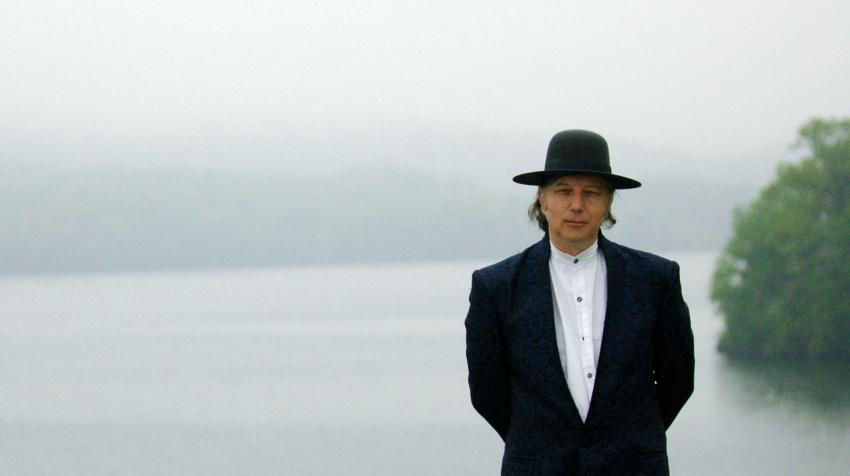
World Peace in One Hour
About the author.
Nenad Bach is a musician, composer and peace activist.
18 September 2020 Y ou may say I'm a dreamer But I'm not the only one I hope someday you'll join us And the world will be as one - John Lennon
Is this just a song or wishful thinking? Are these just words or is it prophecy? Is humanity capable of achieving sustainable, everlasting peace?
I say YES, and the time is NOW.
You can't say that there has been a lack of declarations and resolutions on peace: 1948: Universal Declaration of Human Rights 1978: Declaration on the Preparation of Societies for Life in Peace 1984: Declaration on the Right of Peoples to Peace 1999: Declaration and Programme of Action on a Culture of Peace 2011: The Bruxelles Declaration, “Pledge to Peace” 2016: Annex to Declaration on the Right to Peace 2018: The Global Resolution for the Establishment of Infrastructures to Support the Culture of Peace (not a United Nations resolution)
In 1984, the year I arrived in New York, the United Nations General Assembly, by resolution 39/11, adopted the Declaration of the Right of Peoples to Peace, in which United Nations Member States solemnly proclaimed that the peoples of our planet had a sacred right to peace. Let me repeat this: We all have a sacred right to Peace
Too many leaders, no one to follow Too many clouds, not enough rain Too many words and promises, too hard to swallow Too many innocents died in vain - “I Will Follow You” by Nenad Bach
Previous efforts to achieve global peace have all been full of good intentions, but they resulted in too many declarations and not enough action. This is a historic moment, and if we do not seize it, maybe we do not deserve to survive. As is the case when launching a rocket to meet the International Space Station in orbit, there is a very small window of opportunity to make world peace happen. Protecting the existence of all species, sustaining life on Earth, exploring outer space, tackling disease and mortality, solving the pollution problem, coexisting with the environment, electing more women to leadership positions and creating real freedom that includes true private property: world peace is a prerequisite for all of these objectives. This pandemic should open our eyes to the fact that the First World War ended with the Spanish flu pandemic. So why not use the same modality to end all current wars—now. For this project, I do not rely exclusively on intellectuals or artists or politicians or peace activists. We are all in it—from truck drivers to nurses, from presidents of companies to presidents of countries. Whoever understands the plan and the steps needed to be taken is welcome. I just want to communicate the idea to whomever this resonates with, whether that be the Pope, Paul McCartney, Bono, a hot dog vendor on the corner of First Ave. and Houston St., the Nobel Institute, or any essential worker during the COVID-19 pandemic. We are all in it. Easier said than done? Hear me out. In order to achieve global economic stability and sustainable growth, we should take the following steps and anticipate positive outcomes: 1. Military budgets should stay as they are, amounting to around $2 trillion globally, or maybe even increase, but... 2. Fifty per cent of new arms production should be rewired/transformed to build infrastructure and support research and development. 3. If the G20 countries do that, the current global power structure and balance will remain the same, because those countries represent two thirds of the world’s population and 80 per cent of world-wide gross domestic product . 4. Balance equals peace. 5. Mother Earth will get real infrastructure: tunnels between continents, etc. 6. Viruses will be controlled or even better, they will be used as a vehicle for something good. Imagine a virus that spreads knowledge, immunity, long life. 7. We as a species will be able to unlock our true human potential, respecting all living creatures.
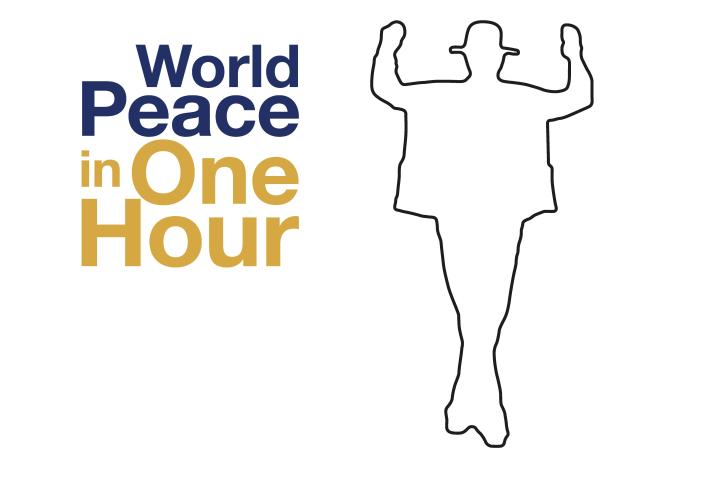
Facts: 1. Twitter goes around the world in a second. The number of smartphones and digital cameras in the world now number about 4 billion . Violence can no longer be easily hidden. Technology is on our side. 2. During the twentieth century, it has been estimated that up to 200 million people were killed by war, oppression and other atrocities . There have been just over 1 million deaths due to conflict in the first 20 years of this century . If this trend were to continue over the next 80 years, it would result in an approximately 40-fold decrease in such deaths. 3. The Western Hemisphere has been a war-free zone since the end of the internal conflict in Colombia in 2016. 4. There are an estimated 110 million active landmines and an equal amount in stockpile . 5. According to the Stockholm International Peace Research Institute , the estimated nuclear warhead count for the top five countries with the most nuclear weapons in 2020, based on available information, is as follows: Russia, 6,375 United States, 5,800 China, 320 France, 290 United Kingdom, 215
Rough estimates of the cost of building and maintaining these terrible weapons are in the trillions of dollars . Cutting these costs in half would defuse a lot of anxiety and free up cash. And again, the power structure and balance would remain the same.
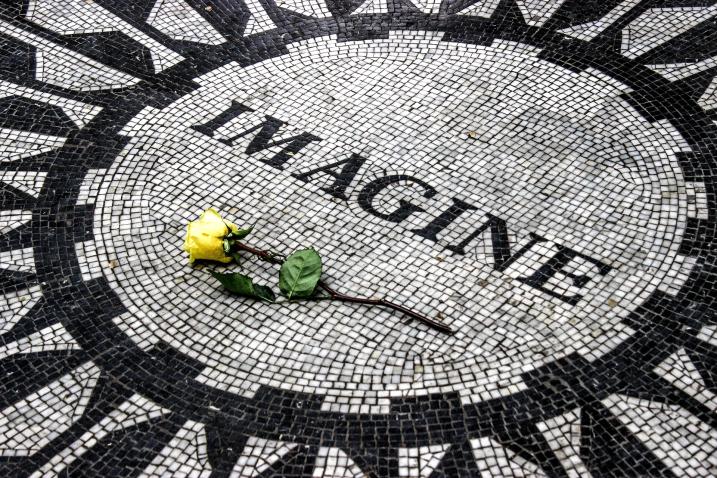
6. The Abraham Accords between Israel and the United Arab Emirates and Bahrain, signed on 15 September 2020, bring us one step closer to world peace in 2021. These are not just words anymore, and the planet is more than ready!
I am actually very impressed by humanity; world leaders paused everyday life on Earth in an effort to save our brothers and sisters from COVID-19. You may be cynical, but almost no one could have predicted this outcome, which proves that the past doesn't equal the future. One day, all the wars will stop permanently. Knowing this, we should capitalize emotionally and unleash unlimited human creativity. A few days ago, I found companies that already exist for mining asteroids. If that is happening now, imagine what a free flow of creativity could produce in the near future.
Pandemics have happened before, but never were we as connected as we are today. Good, bad, but not indifferent, our social media structure should be used not just for sharing what you ate for breakfast this morning, but as a potent vehicle to drive world peace. Yes, it could happen in one hour; if we put the leaders of the G20 countries in one room or on Zoom, and don't give them cookies, it may take only 45 minutes. And yes, I am trying to be funny, but in reality, with the proper preparation, I believe it will happen fairly quickly. In the present state of war, we could dabble in attempts to solve the mysteries of life for the next thousand years, or we could proclaim peace and move forward on all fronts in the next hundred years. You wonder how? Just ask Elon Musk; he’ll produce the plan in two weeks.
“You may say I'm a dreamer/But I'm not the only one/I hope someday...” actually, let that day be 21 September 2021, at United Nations Headquarters in New York: the signing of a world peace declaration. And if you would allow me to dream just a minute longer, two days before, a ping pong tournament could be held in New York between all the presidents, prime ministers and other world leaders at the Javits Convention Center in Manhattan. Ping pong has long been seen as a proven method of diplomacy. And after the signing ceremony, the World Peace in One Hour Orchestra, with all the instruments of the world, will perform “ Everything Is Forever ” and “Stand by Me”, and close with John Lennon’s “ Imagine ”. With our present life span, we cannot travel beyond our solar system, never mind explore the Milky Way. So giddy-up, humanity—there is plenty to be accomplished by the creative class. First stop: the moon; next: Mars; and then the stars, to discover what we are all about and when, how and why it all began. There is no time to waste, and yet, “Time Is All We Have” and “love is all we need”.
For more information on World Peace in One Hour, visit https://worldpeaceinonehour.com/history .
Click here for a full audio recording of this article.
The UN Chronicle is not an official record. It is privileged to host senior United Nations officials as well as distinguished contributors from outside the United Nations system whose views are not necessarily those of the United Nations. Similarly, the boundaries and names shown, and the designations used, in maps or articles do not necessarily imply endorsement or acceptance by the United Nations.
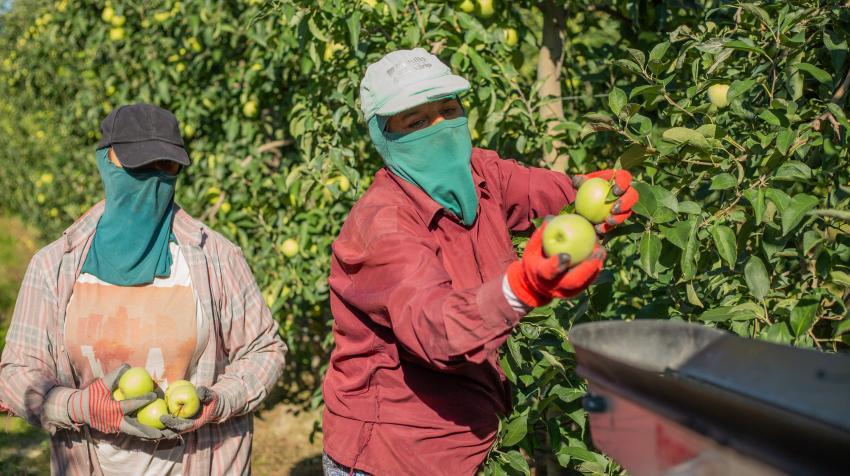
Keeping Food Safe, Even in Unexpected Situations
Food safety is everyone’s business and all of the players along the production chain can do their part.
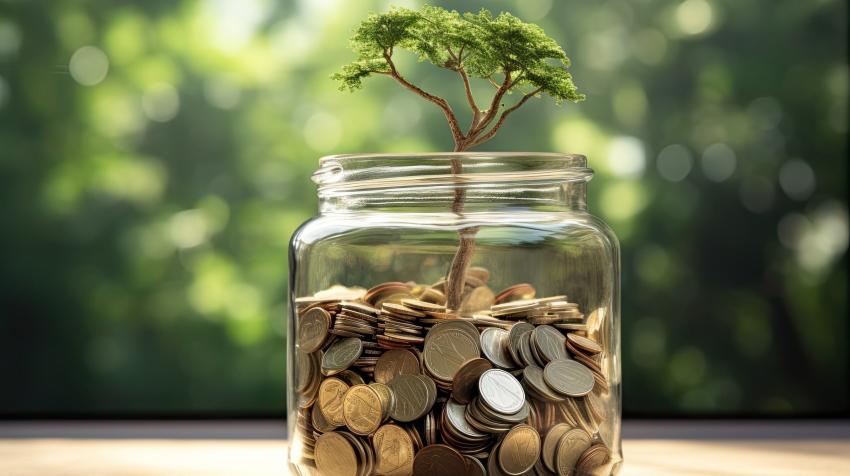
A Chronicle Conversation with Pradeep Kurukulasuriya (Part 1)
In April 2024, Pradeep Kurukulasuriya was appointed Executive Secretary of the United Nations Capital Development Fund (UNCDF). The UN Chronicle took the opportunity to ask Mr. Kurukulasuriya about the Fund and its unique role in implementing the 2030 Agenda for Sustainable Development. This is Part 1 of our two-part interview.

Cultural Diversity in the Digital Age: A Pillar for Sustainable Development
Two important issues affecting the protection and promotion of cultural diversity deserve our attention: the question of discoverability of local and national content, and the impact of generative artificial intelligence (AI).
Documents and publications
- Yearbook of the United Nations
- Basic Facts About the United Nations
- Journal of the United Nations
- Meetings Coverage and Press Releases
- United Nations Official Document System (ODS)
- Africa Renewal
Libraries and Archives
- Dag Hammarskjöld Library
- UN Audiovisual Library
- UN Archives and Records Management
- Audiovisual Library of International Law
- UN iLibrary
News and media
- UN News Centre
- UN Chronicle on Twitter
- UN Chronicle on Facebook
The UN at Work
- 17 Goals to Transform Our World
- Official observances
- United Nations Academic Impact (UNAI)
- Protecting Human Rights
- Maintaining International Peace and Security
- The Office of the Secretary-General’s Envoy on Youth
- United Nations Careers

David Rising, Associated Press David Rising, Associated Press
Ashok Sharma, Associated Press Ashok Sharma, Associated Press
Leave your feedback
- Copy URL https://www.pbs.org/newshour/world/as-indias-rivalry-with-china-grows-modis-3rd-term-likely-to-see-closer-defense-ties-with-u-s
As India’s rivalry with China grows, Modi’s 3rd term likely to see closer defense ties with U.S.
NEW DELHI (AP) — Fresh from declaring victory in India’s election, Prime Minister Narendra Modi offered few details on the agenda for his third term, but went out of his way to underline he would continue to focus on raising the country’s military preparedness and clout.
WATCH: Modi wins 3rd term as India’s prime minister, but party losses could affect how he governs
That should come as good news to the United States and its other allies, as they focus increasingly on keeping China’s sweeping maritime claims and growingly assertive behavior in the Indo-Pacific region in check.
“The government will focus on expanding defense production and exports,” Modi told a crowd of supporters at his party’s headquarters after election results came in. He spoke of his plan to increase security by lowering India’s dependence on arms imports. “We will not stop until the defense sector becomes self sufficient.”
Defense cooperation with the U.S. has greatly expanded under Modi, particularly through the so-called Quad security grouping that also includes Australia and Japan.
It’s a two-way street, giving the U.S. a strong partner neighboring China, which Washington has called its “pacing challenge,” while strengthening India’s defense credibility against a far more powerful rival.
“India is currently a frontline state as far as the Americans are concerned,” said Rahul Bedi, a New Delhi-based defense analyst. “The Indian navy is a major player in the Indian Ocean region.”
The defense relationship was also at the top of U.S. President Joe Biden’s agenda when he congratulated Modi on the election results.
In a call, “the two leaders emphasized their deepening the U.S.-India comprehensive and global strategic partnership and to advancing their shared vision of a free, open and prosperous Indo-Pacific region,” the White House said.
It added that National Security Advisor Jake Sullivan would soon travel to New Delhi “to engage the new government on shared U.S.-India priorities.”
It was about a year into Modi’s second term when India’s defense focus took a sharp turn toward China, when troops from the two nuclear neighbors clashed in 2020 in the Galwan Valley in the disputed northern border region of Ladakh and 20 Indian soldiers were killed.
“China really is India’s long term strategic challenge, both on the border and in the Indian Ocean as well,” said Viraj Solanki, a London-based expert with the International Institute for Strategic Studies.
“This has resulted in a number of defense partnerships by India shifting, or just focusing on countering China’s growing influence in the Indo-Pacific region,” he said.
Beijing has a close relationship with Pakistan, India’s traditional rival, and China has been increasing defense cooperation with India’s neighbors, including Nepal and Bangladesh, as well as the Maldives and Sri Lanka.
“China is really trying to engage more with these countries and develop its own influence and presence,” Solanki said. “I think that is a concern for New Delhi and something that will lead to increased competition in the Indian Ocean over the next few years.”
In congratulating Modi on the election results, Chinese Foreign Ministry spokesperson Mao Ning said that a “sound and stable” relationship between India and China was “in the interest of both countries and conducive to the peace and development of the region.”
She also added that China stood “ready to work with India,” but her comments were significantly more muted than the Foreign Ministry’s remarks on Modi’s last win in 2019 — before the border fight. At that time, the Foreign Ministry called the two nations “important neighbors” and said China wanted to “deepen political mutual trust, carry out mutually beneficial cooperation and push forward the closer partnership between the two countries.”
Modi has always governed with his party in the majority, but after a lackluster performance in the election will now be forced to rely on coalition partners, and will face a stronger and invigorated opposition.
READ MORE: India’s opposition parties, largely written off ahead of election, make comeback to hobble Modi
The main opposition Congress party is unlikely to challenge Modi’s defense reforms, but has been critical of how he has handled the border issue with China and may pressure him on that front, Bedi said.
“Modi has not been entirely truthful, or very economical with the truth as far as the situation in Ladakh is concerned,” he said. He referred to a Defense Ministry document that was published online, and quickly removed, which had suggested Chinese troops entered Indian territory during the 2020 confrontation.
“The opposition, I am sure, will raise questions and ask the government to come clean on what the real situation is.”
Under Modi’s program of military modernization and reform, his government has sought to grow the private defense manufacturing sector, a space previously occupied solely by the government-run organizations, and has eased foreign direct investment regulations to try and encourage companies to establish themselves in India.
In a flagship project, the country launched its first home-built aircraft carrier in 2022, part of a plan to deploy two carrier battle groups to counter China’s rising maritime power.
Much of India’s military equipment is of Russian origin, and delays on delivery and difficulties of procuring spare parts due to Russia’s invasion of Ukraine has also provided impetus for India to diversify defense procurement, looking more to the U.S., France, Israel and elsewhere, Solanki said.
As it seeks to strengthen ties with India, Washington has agreed to a deal that will allow General Electric to collaborate with Hindustan Aeronautics to produce fighter jet engines.
Speaking at the Shangri-La defense conference in Singapore last weekend, U.S. Defense Secretary Lloyd Austin said the countries were also co-producing armored vehicles.
“The relationship that we enjoy with India right now is as good or better than our relationship has ever been,” he said. “It’s really strong.”
Support Provided By: Learn more
Educate your inbox
Subscribe to Here’s the Deal, our politics newsletter for analysis you won’t find anywhere else.
Thank you. Please check your inbox to confirm.


Essay on Peace and Harmony for Children and Students

Table of Contents
Peace and Harmony is the basic requirement of any nation. The citizens of a country feel safe and secure and can prosper only if a peaceful environment is maintained. While the people of India largely enjoy a peaceful environment, however, the peace and harmony of the country is disrupted many a times owing to various factors.
Fill Out the Form for Expert Academic Guidance!
Please indicate your interest Live Classes Books Test Series Self Learning
Verify OTP Code (required)
I agree to the terms and conditions and privacy policy .
Fill complete details
Target Exam ---
India enjoys unity in diversity. People belonging to different religions, castes and creeds live together in the country. The Constitution of India gives its citizens the freedom of equality and various laws are in force to ensure peace and harmony in the country. However, there have been several instances when peace has been disrupted in the country owing to different reasons. Here are essays of varying lengths to help you with the topic in your exam.
Long and Short Essay on Peace and Harmony in English
Peace and harmony essay 1 (200 words).
Peace and Harmony is the basic need of any nation. Only if a nation enjoys peace and harmony would it be able to prosper. The Constitution of our country includes laws to ensure political and social equality among the citizens in order to avoid clashes and maintain harmony among its citizens.
Though the people of our country live peacefully with each other, often the peace is disturbed owing to some political, social, economic and religious factors. Price rise and unemployment also creates unrest among the people. People often come forward to protest against these issues due to which the normal functioning of the society is disrupted.
Terrorism is another factor that hampers the peaceful living of the people. Several terrorist attacks have been carried out in the past and the life of people has been disturbed owing to these. Some of these include the 1996 Brahmaputra mail train bombing, 1998 Coimbatore bombings, 2003 Mumbai bomb blasts, 2006 Varanasi blasts, 2013 Bangalore blast and 2015 Gurdaspur attack.
Communal riots such as the 1980 Moradabad Riots, 1984 Anti-Sikh Riots, 1985 Gujarat Riots and 2013 Muzaffarnagar riots have also caused mass destruction.
The government as well as the citizens of the country must work together to bring about peace and harmony in the country.

Peace and Harmony Essay 2 (300 words)
Peace and harmony are the building blocks of any society. Only if there is peace and harmony in the country would there be growth and development. The government of the country makes every attempt to ensure peace and harmony in the country. However, it is often disrupted due to vested interests. Here is a look at these and also the instances when peace in the country was disturbed.
Factors Impacting Peace and Harmony
- Terrorist attacks have been one of the major reasons for the disruption of peace and harmony in the country.
- Peace and harmony in the country is often disrupted in the name of religion. Certain religious groups try to belittle other religions, thereby causing discontent in the society.
- Political parties often instigate people against other parties to fulfil their own selfish motifs and this often hampers the peace in the state.
- The reservation system has also led to a lot of unrest among the people belonging to the general category. Certain communities have carried out protests demanding reservation for their people as well.
Likewise, inflation, unemployment and inter-state issues have also led to disturbance in the society time and again.
Instances of Disruption of Peace and Harmony
There have been several instances when the peace and harmony of the country was disturbed. Some of these are as follows:
- 1957 Ramnad Riots
- 1967 Ranchi-Hatia Riots
- 1987 Haryana Killings
- 1990 Hyderabad Riots
- 1993 Bombay Bombings
- 2000 Terrorist attack on Red Fort
- 2001 Indian Parliament Attack
- 2002 Gujarat Riots
- 2006 Vadodara Riots
- 2007 Delhi Bomb blasts
- 2008 Jaipur Bombing
- 2008 Gujjar Agitation
- 2012 Pune Bombings
- 2013 Muzaffarnagar Riots
- 2013 Bodh Gaya Bombings
- 2016 Jat Reservation Agitation
It is difficult to maintain peace and harmony in the country until each one of us is sensitized about its need and contributes towards the same. The government alone cannot ensure sense of brotherhood and amity in society.
Peace and Harmony Essay 3 (400 words)
Peace and harmony is very important for the smooth functioning of any society. In order to give a safe and secure environment to its citizens, the government of India takes steps to maintain peace in the country. However, often, it is disrupted due to different social, political and economic factors. Here is a look at these factors and the instances when peace and harmony of the country has been hampered.
Factors Affecting Peace and Harmony
- Political Issues
In an attempt to score partisan goals, political parties usually instigate people against them and this often leads to disturbances in the country.
Terrorist attacks disrupt peace and harmony in the country. Such attacks create a lot of panic among the people.
Certain religious groups try to influence other people and force them to follow their religion or simply belittle other religions. This has led to communal violence many a times.
Apart from these, inter-state issues, reservation system, price rise, poverty and unemployment also disrupt the peace and harmony in the country.
Instances of Peace and Harmony being Hampered
- 1967 Ranchi Hatia Riots
These communal riots occurred in and around Ranchi in August 1967. They continued for almost a week. 184 people were reported to be killed during this.
- 1969 Gujarat riots
Known to be the most deadly Hindu-Muslim riots after the Partition of India, these occurred during September-October 1969.
- Worli Riots
These riots occurred on the issue of reservation between the members of Shiv Sena and Dalit Panther in Mumbai. The Dalit Panther leader Bhagwat Jadhav was killed during this in 1974.
- Moradabad Riots
Occurred during the August 1980, these were partially a Hindu-Muslim clash and partially a Muslim-Police conflict. The riots began when Muslims threw stones at the police as they refused to remove pig from the local Idgah. The violent incidents continued till November 1980.
- 1993 Bombay Bombing
A series of 12 bomb explosions took place on the 12th of March 1993 in Bombay. One of the most destructive bomb explosions in India, it was carried out in reaction to 1992 Babri Masjid Demolition.
- 2000 Church Bombings
It refers to the serial bombing of churches in the states of Goa, Karnataka and Andhra Pradesh. These bombings were done in the year 2000 by the Islamist extremist group, Deendar Anjuman.
It is necessary for every citizen of India to understand the importance of peace and harmony in the country and together each one should work towards maintaining the same.
Peace and Harmony Essay 4 (500 words)
India is known for its democratic system and secularism that gives both political and religious equality to all its citizens to ensure peace and harmony in the country. However, there are several factors that disturb peace in the country. Here is how the Constitution binds people from diverse backgrounds as well as the factors that hamper the peace and harmony of the country.
Secularism Promotes Peace and Harmony
India is a secular country. The Constitution of India gives each of its citizens the right to practise his/her religion. The country does not have any official religion. All the religions are treated equally by the state. Equal respect to all the religions is a way of promoting peace and harmony in the country. People belonging to different religions rejoice each other’s company and celebrate all the festivals with equal zeal. In schools, at work places and various other places, people study and work together harmoniously.
The citizens of India largely live in harmony with each other. However, there are times when the peace is disrupted owing to various reasons. Some of these are mentioned below:
Terrorist attacks create panic in the society. The terror spread through these attacks remains for days to come thereby impacting peace and harmony in the country. There have been several instances of terrorist attacks in India.
Though India does not have any official religion and gives its citizens the freedom to choose or change their religion as per their will, however, there are certain religious groups that propagate and promote their religion to the level that they end up offending people belonging to the other religions. This often leads to communal violence.
- Political Motives
Often, lack of principles is observed in political parties. One party tries to defame the other in an attempt to come to the power and stick there. Many times people belonging to a particular religion are incited to create unnecessary disturbance in the state.
- Reservation System
In an attempt to ensure social and economic equality for the people belonging to the lower classes, the Constitution initiated the reservation system. This system has largely been opposed and many people belonging to the other castes have also come forward to demand reservation for their community. This has caused a stir and hampered peace many times.
- State Issues
Parties such as Shiv Sena have shown intolerance towards allowing people belonging to other states to work in Maharashtra. Such issues among the states also lead to disruption of peace.
The growing rise in the prices of commodities, especially the ones that are required for daily use, is another reason for unrest in the society. People often come forward to protest against sudden rise in the prices and normal functioning of the society is often disrupted due to this.
While the government of India takes every possible means to ensure peace and harmony in the country, we still have a long way to go. It is only when each citizen recognizes the dangers of disunity, would there be complete peace and harmony in the country.

Peace and Harmony Essay 5 (600 words)
People belonging to different religions and castes reside in different parts of India. While these people largely live in harmony with each other, however, often the peace and harmony of the country is disrupted owing to various reasons. Here is how harmony is maintained amid diversity and the factors that disrupt peace.
While the government of India is taking every possible step to maintain peace and harmony in the country, there are a number of factors that disturb it. Here is a look at the same:
Though the state does not follow any official religion and allows its citizens to choose or change their religion at any point, however, there are certain religious groups that propagate their religion to the extent that it hampers the peace and harmony of the country.
- Caste System
There is a lot of discrimination done based on a person’s caste and creed even though the Constitution gives the right to equality to all. This discrimination sometimes leads to social outbursts and disrupts peace.
The reservation system in the country was initiated with an aim to raise the standard of living of the people belonging to the scheduled castes and scheduled tribes. However, people belonging to other castes such as the Gujjar and Jat have also started demanding for reservations, thereby, hampering the peace.
- Inter-State Issues
Many regional parties do not encourage people from other states settling in there. This often creates a lot of tension among the Shiv Sena members and the people belonging to other states in Maharashtra.
- Unemployment and Poverty
Lack of education and good job opportunities lead to unemployment that eventually add to the poverty and raise the crime rate in the country.
- Political Menace
Many times, the opposition instigates the general public against the party in power to fulfil their own selfish motives and this eventually leads to disturbances.
Price rise is another problem that can disrupt the smooth functioning of a society. There have been several instances when people have come forward to revolt against undue price rise and hampered the peace.
India has faced several terrorist attacks that have created fear among the citizens. The disturbance caused due to such attacks disrupts the normal functioning of the society.
There have been several instances when the peace and harmony of the country was compromised by different groups and communities. Some such instances have been shared below:
- 1969 Gujarat Riots : The Indian state of Gujarat saw communal violence between Hindus and Muslims during September-October 1969. This was first major riot in the state that involved massacre and loot on a wide scale.
- 1984 Sikh Massacre : The Sikhs in the country were attacked, by violent mobs. This was done as a response to the murder of former Prime Minister Indira Gandhi by her Sikh bodyguards.
- 2008 Mumbai Attack : Some members of the Islamic militant organization, Lashkar-e-Taiba entered Mumbai and carried out a series of shooting and bomb attacks for four days.
- Jat Reservation Agitation : Several protests were organised by Jat people in Haryana in February 2016. They demanded the inclusion of their caste in the Other Backward Class category. This disrupted the normal functioning of the state and the agitation is far from over even today.
Though the Constitution of India gives the right to equality to all its citizens to ensure complete harmony among them, there have been several instances wherein the peace has been disrupted owing to different social, political and economic reasons. The government alone cannot responsible for maintaining peace and harmony in the country. Each one of us should take it as our responsibility to nurture feelings of brotherhood with fellow citizens.
Related content
Talk to our academic expert!
Language --- English Hindi Marathi Tamil Telugu Malayalam
Get access to free Mock Test and Master Class
Register to Get Free Mock Test and Study Material
Offer Ends in 5:00

- OUR CENTERS Bangalore Delhi Lucknow Mysuru Srinagar Dharwad Hyderabad
Call us @ 08069405205

Search Here

- An Introduction to the CSE Exam
- Personality Test
- Annual Calendar by UPSC-2024
- Common Myths about the Exam
- About Insights IAS
- Our Mission, Vision & Values
- Director's Desk
- Meet Our Team
- Our Branches
- Careers at Insights IAS
- Daily Current Affairs+PIB Summary
- Insights into Editorials
- Insta Revision Modules for Prelims
- Current Affairs Quiz
- Static Quiz
- Current Affairs RTM
- Insta-DART(CSAT)
- Insta 75 Days Revision Tests for Prelims 2024
- Secure (Mains Answer writing)
- Secure Synopsis
- Ethics Case Studies
- Insta Ethics
- Weekly Essay Challenge
- Insta Revision Modules-Mains
- Insta 75 Days Revision Tests for Mains
- Secure (Archive)
- Anthropology
- Law Optional
- Kannada Literature
- Public Administration
- English Literature
- Medical Science
- Mathematics
- Commerce & Accountancy
- Monthly Magazine: CURRENT AFFAIRS 30
- Content for Mains Enrichment (CME)
- InstaMaps: Important Places in News
- Weekly CA Magazine
- The PRIME Magazine
- Insta Revision Modules-Prelims
- Insta-DART(CSAT) Quiz
- Insta 75 days Revision Tests for Prelims 2022
- Insights SECURE(Mains Answer Writing)
- Interview Transcripts
- Previous Years' Question Papers-Prelims
- Answer Keys for Prelims PYQs
- Solve Prelims PYQs
- Previous Years' Question Papers-Mains
- UPSC CSE Syllabus
- Toppers from Insights IAS
- Testimonials
- Felicitation
- UPSC Results
- Indian Heritage & Culture
- Ancient Indian History
- Medieval Indian History
- Modern Indian History
- World History
- World Geography
- Indian Geography
- Indian Society
- Social Justice
- International Relations
- Agriculture
- Environment & Ecology
- Disaster Management
- Science & Technology
- Security Issues
- Ethics, Integrity and Aptitude

- Indian Heritage & Culture
- Enivornment & Ecology

UPSC Sansad TV: AIR- India-ASEAN Cooperation for Peace, Prosperity and Regional Stability

ASEAN role in Indo-Pacific:
- Central to Modi’s speech always is the Association of Southeast Asian Nations (Asean) unity, which he says was essential for a stable future for the region and that Asean lies at the heart of the new Indo-Pacific.
- India’s stress on the centrality and unity of Asean for securing the region and maintaining a rules-based order is important.
- A united Asean backed by major powers will be able to counter an expansionist China.
- China, which is looking to expand its footprint in the Indian Ocean, will be forced to focus more on South China Sea.
- This can be offset if countries like India, the US and Japan work together to build infrastructure and provide development assistance to these countries to prevent them from falling under Chinese influence.
India-ASEAN relations
- Free Trade Agreement: India signed a FTA in goods in 2009 and an FTA in services and investments in 2014 with ASEAN.
- Apart from this, India has a Comprehensive Economic Cooperation Agreement (CECA) with various countries of the ASEAN region which has resulted in concessional trade and a rise in investments.
- India’s investment in ASEAN during the same period has been more than $40 billion.
- Trade between India and ASEANstood at $65.04 billion in 2015-16 and comprises 10.12 per cent of India’s total trade with the world.
- Connectivity is another important issue of convergence, with India working toward formalizing its transit agreements and establishing better connectivity infrastructure with this region through land, water, and air, example- India-Myanmar-Thailand Trilateral Highway and the Kaladan Multimodal Project.
- Security: ASEAN platform allows India to discuss non-traditional security issues in Indian Ocean Region (IOR) like piracy, illegal migration, and trafficking of drugs, arms, and human, maritime terrorism, etc. which can only be resolved on a multilateral level.
- India has also scored several diplomatic successes at ARF,including maintaining ties after its nuclear test of 1998, isolating Pakistan during the Kargil War, and lobbying against Pakistan’s entry in the forum till 2002.
- The aggressive rise of China, both economically and militarily, has caused suspicion among the countries in the region. This provides an opportunity to India which seeks to balance China and gain cooperation in the region.
India’s actions under Act East policy:
- India’s Act East Policy focusses on the extended neighbourhood in the Asia-Pacific region.
- The policy which was originally conceived as an economic initiative, has gained political, strategic and cultural dimensions including establishment of institutional mechanisms for dialogue and cooperation.
- The Objective of ”Act East Policy” is to promote economic cooperation, cultural ties and develop strategic relationship with countries in the Asia-Pacific region
- Relations with ASEAN have become multi-faceted to encompass security, strategic, political, counterterrorism, and defence collaboration in addition to economic ties.
- India has been an active participant in mechanisms like the Indian Ocean Rim Association (IORA), in ASEAN-led frameworks like the East Asia Summit, the ASEAN Defence Ministers’ Meeting Plus, the ASEAN Regional Forum as well as the Bay of Bengal Initiative for Multi-Sectoral Technical and Economic Cooperation and the Mekong-Ganga Economic Corridor.
- India has also been convening the Indian Ocean Naval Symposium, in which the navies of the Indian Ocean Region (IOR) participate. India has boosted its engagements with Australia and New Zealand and has deepened its cooperation with the Republic of Korea.
- Through the Forum for India-Pacific Islands Cooperation, India is stepping up its interactions with the Pacific Island countries. India’s growing partnership with Africa can be seen through the convening of mechanisms like the India-Africa Forum Summits.
- India’s multi-layered engagement with China as well as strategic partnership with Russia underlines its commitment to ensuring a stable, open, secure, inclusive and prosperous Indo-Pacific.
- In addition to reviving the economic partnership, India has focused on promoting connectivity with other ASEAN states through Myanmar and Thailand.
- AEP has imparted greater vigour to India’s ties with ASEAN.
- AEP has sought to significantly expand its geographical coverage beyond ASEAN alone, to include other countries like Japan, Australia, Pacific Island nations, South Korea, and Mongolia.
- India’s partnership with Japan has witnessed the most dynamic growth.
- India’s AEP has also impacted relations with the United States.
- By aligning India’s Act East Policy with the U.S. pivot to Asia, India seeks to expand its geo-strategic space to contend with China’s growing assertiveness and foster balanced relations.
Enhancing India-Asean relation further
- The loss of US market by the ASEAN nations can be compensated with the domestic demand in India which has been increasing with the rise of middle class in the country.
- In terms of security challenges, both ASEAN and India are faced with grave vulnerabilities with regard to terrorism and it is in their common interest to work together to build peace and security in the region.
- With the withdrawal of US troops from strategic locations in the region, ASEAN countries justifiably perceive India, with the largest Naval forces in the Indian Ocean and nuclear capabilities, a strategic partner to balance China’s growing power in the region.
- While East Asia is on the verge of entering a phase of lower share of working age population India is entering a phase with a higher share of working age population which can prove to be a human resource base for East Asia.
- Along with East Asian specialization in manufactures, India’s strength in services could result in a formidable strategic combination which may be mutually beneficial for both the sides.
- India has welcomed the Indo-Pacific document by ASEAN and is pushing for early conclusion of code of conduct on South China Sea by ASEAN and China.
The region has become strategically important for India due to its growing importance in the world politics. And for India to be a regional power as it claims to be, continuing to enhance its relations with ASEAN in all spheres must be a priority.
SANSAD TV 29-4-24

- Our Mission, Vision & Values
- Director’s Desk
- Commerce & Accountancy
- Previous Years’ Question Papers-Prelims
- Previous Years’ Question Papers-Mains
- Environment & Ecology
- Science & Technology

Inner Peace, World Peace
Essays on buddhism and nonviolence, alternative formats available from:.
- Google Play
Read Excerpt View Table of Contents
Request Desk or Examination Copy Request a Media Review Copy
- Share this:
Table of contents
Introduction Kenneth Kraft
1. Prospects of a Socially Engaged Buddhism by Kenneth Kraft
2. Nonviolence and the Self in Early Buddhism by Luis O. Gómez
3. Nonviolence to Animals in Buddhism and Jainism by Christopher Chapple
4. Exemplars of Nonviolence in Theravada Buddhism by Donald K. Swearer
5. Tibet and the Monastic Army of Peace by Robert A. F. Thurman
6. The Impact of Christianity on Buddhist Nonviolence in the West by Cynthia Eller
7. Nonviolent Struggle: An Effective Alternative by Gene Sharp
8. Buddhism and Contemporary International Trends by Sulak Sivaraksa
Contributors
Description
What can one person do to foster world peace? How does one person's state of mind affect the state of the world? How can the ideal of nonviolence be manifested in daily life? Buddhists have been exploring questions like these for twenty-five centuries, and they are still timely today.
Inner Peace, World Peace is the first work in any western language to examine the Buddhist approach to nonviolence. Well-known Buddhist scholars, a noted authority on nonviolent struggle, a prominent Thai Buddhist activist, and other leaders in their fields collaborate to show the contemporary relevance of the Buddhist tradition. The authors also discuss a new international movement known as "socially engaged Buddhism. "
Kenneth Kraft is Associate Professor of Religion Studies at Lehigh University. He is the author of Eloquent Zen: Daito and Early Japanese Zen and the editor of Zen: Tradition and Transition .
"The authors have taken risks. It is good to see mature and well-known Buddhist scholars taking personal positions on these matters instead of hiding behind their scholarship. " — Graeme MacQueen, Centre for Peace Studies, McMaster University

International Day of Peace
21 september.
un.org/peaceday
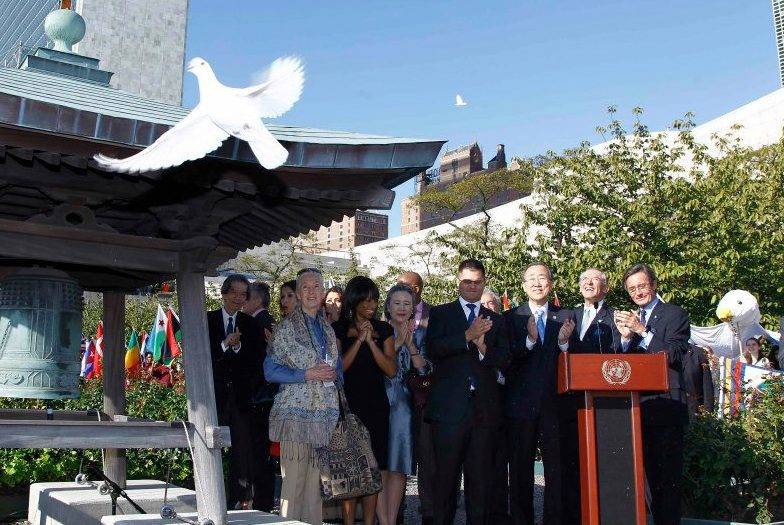
INTERNATIONAL DAY OF PEACE PROMOTIONAL VIDEO
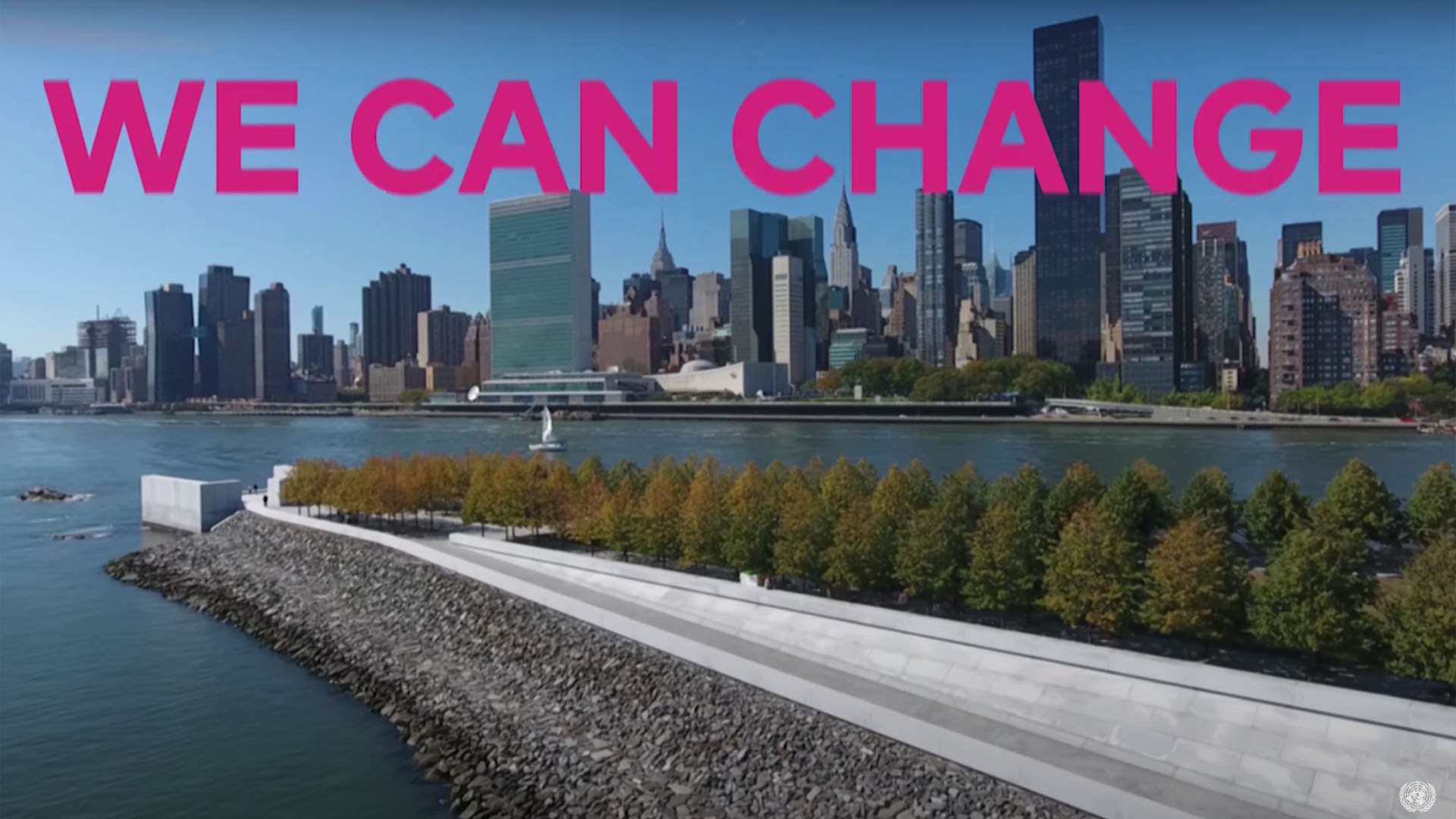
TOGETHER: A global campaign to change perceptions and attitudes towards refugees and migrants
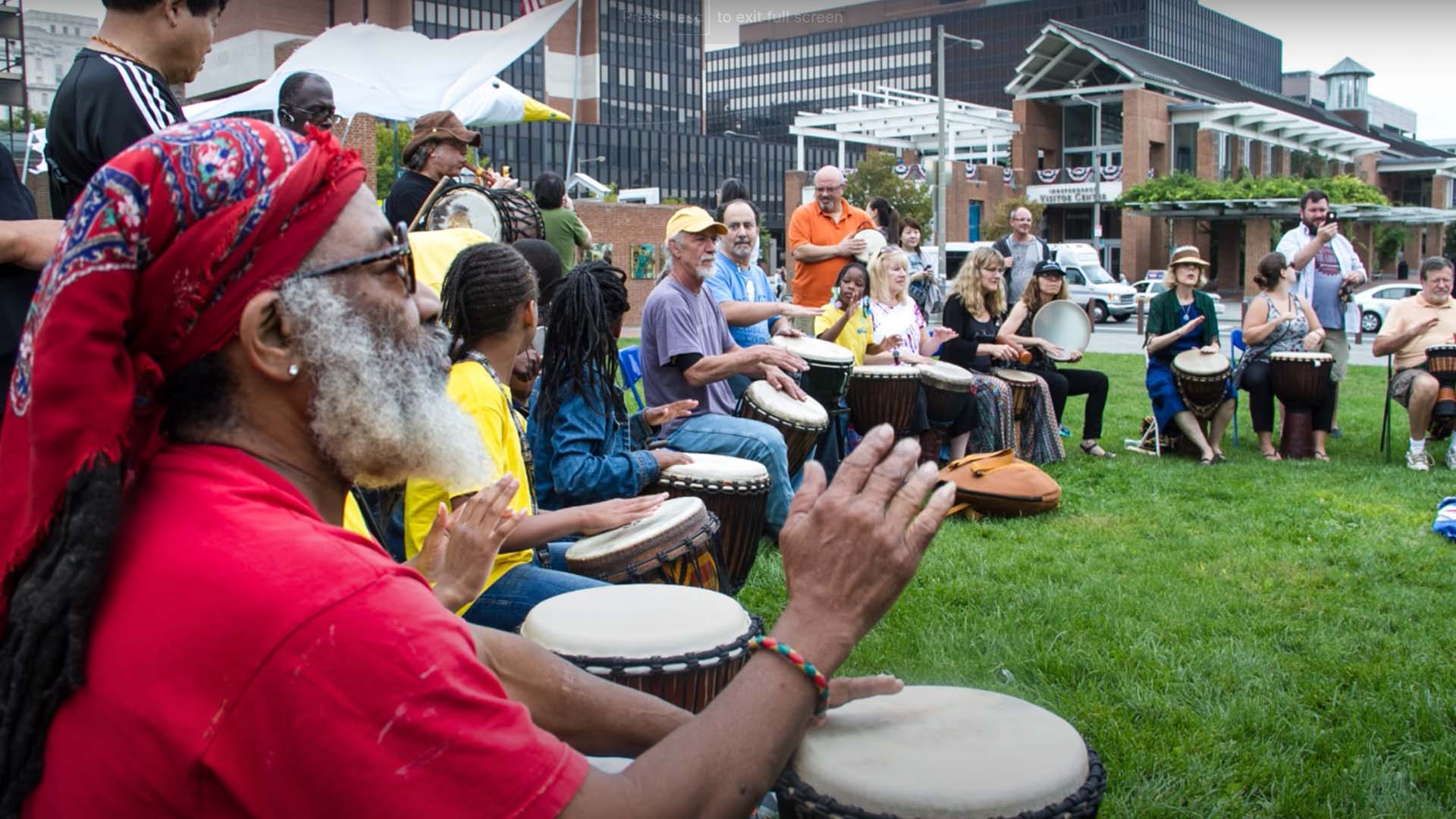
What Can YOU Do for the U.N. International Day of Peace?

1984 First Major Local Global United Nations Peace Day Celebration

WHAT IS THE INTERNATIONAL DAY OF PEACE?
The International Day of Peace (“Peace Day”) is observed around the world each year on 21 September. Established in 1981 by unanimous United Nations resolution, Peace Day provides a globally shared date for all humanity to commit to Peace above all differences and to contribute to building a Culture of Peace.
This is a long-established universal website that serves all involved in Peace Day, beginning annually with the 100-day Countdown.
This year is particularly significant: It is the 20th Anniversary of the UN Resolution on the Programme of Action on a Culture of Peace. A/RES/53/243 B
Let us all create Peace Day every day!
UN Secretary General, Antonio Guterres, delivers his 100-day countdown to the International Day of Peace message. https://www.un.org/en/events/peaceday/100days.shtml
PEACE DAY THEME
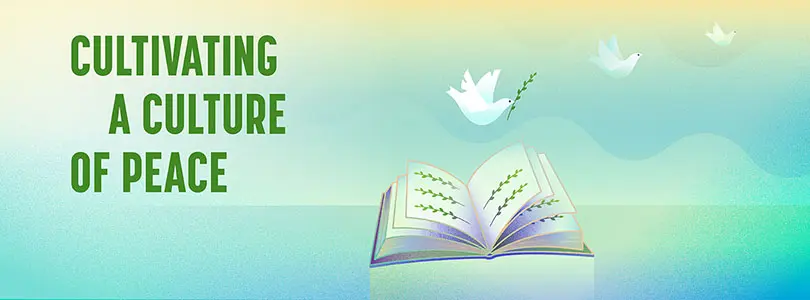
2024 Global Peace Day Theme: Cultivating a Culture of Peace
This year marks the 25th anniversary of the United Nations General Assembly’s adoption of the Declaration and Programme of Action on a Culture of Peace.
Learn more HERE
GET INVOLVED
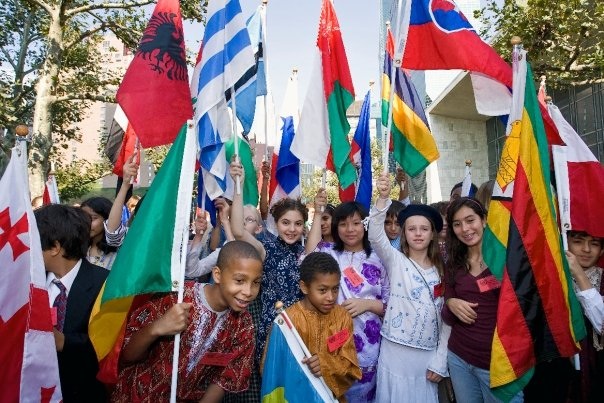
From education to the arts, social justice to sports, health to the environment, neighborhood issues to service for others, there are many ways to participate in Peace Day! We invite you to create a public or private activity related to peace, spread the word about Peace Day and/or attend an event in your community.
- Election 2024
- Entertainment
- Newsletters
- Photography
- Personal Finance
- AP Investigations
- AP Buyline Personal Finance
- AP Buyline Shopping
- Press Releases
- Israel-Hamas War
- Russia-Ukraine War
- Global elections
- Asia Pacific
- Latin America
- Middle East
- Election Results
- Delegate Tracker
- AP & Elections
- Auto Racing
- 2024 Paris Olympic Games
- Movie reviews
- Book reviews
- Personal finance
- Financial Markets
- Business Highlights
- Financial wellness
- Artificial Intelligence
- Social Media
India’s Modi prepares for record 3rd term as nations congratulate his government on election victory
Since coming to power a decade ago, Prime Minister Narendra Modi has been known for big, bold and often snap decisions that he’s found easy to execute thanks to the brute majority he enjoyed in India’s lower house of parliament. However, in his expected next term as prime minister — when he will need a coalition to govern after results announced Wednesday showed his Hindu nationalist party fell short of a majority — Modi may have to adapt to a style of governance he has little experience with, or desire for. And it’s not clear how that will play out.
Prime Minister Narendra Modi addresses supporters at the Bharatiya Janata Party (BJP) headquarters in New Delhi, India, Tuesday, June 4, 2024. (AP Photo/Manish Swarup)
- Copy Link copied
Prime Minister Narendra Modi is greeted by supporters as he arrives at Bharatiya Janata Party (BJP) headquarters in New Delhi, India, Tuesday, June 4, 2024. (AP Photo/Manish Swarup)
Bharatiya Janata Party (BJP) supporters shout slogans as they listen to Prime Minister Narendra Modi at the party headquarters in New Delhi, India, Tuesday, June 4, 2024. (AP Photo/Manish Swarup)
Prime Minister Narendra Modi, right, chats with Defense Minister Rajnath Singh before addressing supporters at the Bharatiya Janata Party (BJP) headquarters, in New Delhi, India, Tuesday, June 4, 2024. (AP Photo/Manish Swarup)
Prime Minister Narendra Modi, right, with Defense Minister Rajnath Singh leaves after addressing supporters at the Bharatiya Janata Party (BJP) headquarters, in New Delhi, India, Tuesday, June 4, 2024. On the banner it’s written in local language ‘Thank you Bharat”. (AP Photo/Manish Swarup)
Prime Minister Narendra Modi shares the stage with Defense Minister Rajnath Singh, left, and Home Minister Amit Shah, right, before addressing supporters at the Bharatiya Janata Party (BJP) headquarters in New Delhi, India, Tuesday, June 4, 2024. (AP Photo/Manish Swarup)
FILE - Indian Prime Minister Narendra Modi, left, greets along with his newly sworn in cabinet ministers at the swearing in ceremony at the forecourt of presidential palace in New Delhi, India, Thursday, May 30, 2019. Modi met with India’s President Droupadi Murmu customarily and tendered his resignation along with his ministers ahead of the swearing-in ceremony likely to occur in the coming days. (AP Photo/Manish Swarup, File)
NEW DELHI (AP) — The United States, Russia, China, and other nations sent their congratulations Wednesday as Indian Prime Minister Narendra Modi’s government began preparations for his swearing-in for a record third term following the world’s largest democratic election.
Modi’s Hindu-nationalist Bharatiya Janata Party met with allies who unanimously elected Modi as the National Democratic Alliance leader. Modi is likely to be sworn in as the prime minister on Saturday, local media said.
Over 50 countries go to the polls in 2024
- The year will test even the most robust democracies. Read more on what’s to come here .
- Take a look at the 25 places where a change in leadership could resonate around the world.
- Keep track of the latest AP elections coverage from around the world here.
Official results from the Election Commission showed the BJP-led National Democratic Alliance or NDA won 294 of the 543 seats, more than the 272 needed for a majority but far fewer than had been expected. For the first time since the BJP swept to power in 2014, it did not secure a majority on its own, winning 240 seats, far fewer than the record 303 it won in the 2019 election.
Modi met on Wednesday with Indian President Droupadi Murmu and tendered his customary resignation along with that of his Cabinet ahead of the swearing-in ceremony.
Congratulatory messages to Modi from leaders of regional countries including Nepal and Bhutan were the first to arrive, while the White House commended India for its “vibrant democratic process.”
Matthew Miller, the U.S. State Department spokesperson, said the U.S. looks forward to furthering “our partnership with the Indian government to promote prosperity and innovation, address the climate crisis, and ensure a free and open Indo-Pacific region.”
U.S. President Joe Biden spoke with Modi to congratulate him and the National Democratic Alliance on their historic victory in India’s general election, Biden also commended the people of India for participating in the largest democratic exercise in human history.
Russia’s President Vladimir Putin spoke on the phone with Modi on Wednesday and “warmly congratulated” him. Putin and Modi “expressed satisfaction with the current level of the specially privileged strategic partnership between Russia and India, which will continue to expand in all directions,” said a readout by the Kremlin.
In Beijing, Chinese Foreign Ministry spokesperson Mao Ning on Wednesday extended congratulations to the BJP.
“A sound and stable India-China relationship is in the interest of both countries and conducive to the peace and development of this region and beyond,” she said, adding that China is ready to work with India in the fundamental interest of the two countries.
Tensions remain high between India and China, with tens of thousands of soldiers massed on their disputed border since 2020. A clash left 20 Indian soldiers and four Chinese soldiers dead.
Ukraine President Volodymyr Zelenskyy said he looked forward to seeing India attend a peace summit to be hosted by Switzerland.
“Everyone in the world recognizes the significance and weight of India’s role in global affairs. It is critical that we all work together to ensure a just peace for all nations,” he said.
Taiwanese President Lai Ching-te said he looked forward to expanding collaboration in trade, technology and other sectors to contribute to peace and prosperity in the Indo-Pacific.
In the election, the opposition Congress party won 99 seats, improving its tally from 52 in the 2019 polls. Among its key allies, the Samajwadi Party won 37 seats in northern Uttar Pradesh state in a major upset for the BJP, the All India Trinamool Congress took 29 seats in West Bengal state, and the Dravida Munnetra Kazhagam won 22 seats in southern Tamil Nadu state.
Combined, the opposition INDIA coalition won a total of 232 seats.
The BJP may now be “heavily dependent on the goodwill of its allies, which makes them critical players who we can expect will extract their pound of flesh, both in terms of policymaking as well as government formation,” said Milan Vaishnav, director of the South Asia Program at the Carnegie Endowment for International Peace.
“At the very least, the result pricks the bubble of Prime Minister Modi’s authority. He made this election about himself,” Pratap Bhanu Mehta, a political commentator, said in The Indian Express newspaper. “Today, he is just another politician, cut to size by the people.”
More than 640 million votes were cast in the marathon election held over six weeks, the world’s largest democratic exercise .
Opinion Kids yearn to be saved from their own phones
Plus: Trump’s dangerous revenge plan. Elections around the world. A decent peace for Gaza.

You’re reading the Today’s Opinions newsletter. Sign up to get it in your inbox.
In today’s edition:
- One school stands athwart screen addiction
- Election analysis in India , Britain and the E.U.
- The deal to end war in Gaza is good. Hamas should take it.
- Call Trump dangerous . Just don’t call him a “felon.”
Hooked on phones (ick!)
Kate Cohen is rightfully wary of casting the past as America’s glory days; you will know this well if you’ve read her occasional cases for atheism.
But Kate has her limits, she writes, “So it is with some reluctance that I say: Kids these days are on their cellphones too much .”
Her column takes us into Bethlehem Central High School outside Albany, N.Y., where administrators are trying to change that, at least for the 180 seven-hour chunks of the school year. When she steps into the cafeteria, she feels as though she has stepped into the 1980s again. No acid-washed denim or leg warmers (yet) — just lively lunchtime conversation, which, in case you haven’t been inside a school lately, has become a bit of a relic.
Interestingly, she reports that many of Bethlehem’s students are fans. Instead of bristling at the restrictions, “they were relieved not to have to respond to posts and texts during the school day.”
Once you read the jarring statistics Kate pulls about how badly screen-hooked kids are, you’ll get it: Who wouldn’t want to be freed from such an addiction?
Can we have school on Saturdays?
Chaser: Fareed Zakaria recently provided a primer on the science behind screen addiction — in making his case for banning TikTok.
The globe goes to the polls
Election check-in! Americans are understandably hyperfocused on the race between President Biden and former president Donald Trump , but how is the rest of the world voting?
Let’s start with the planet’s largest democracy. Indian Prime Minister Narendra Modi this week won a third term — but in Parliament, his Hindu-nationalist Bharatiya Janata Party lost seats, a surprising underperformance for a politician and party that had seemed like juggernauts. It’s the first time in Modi’s political career that he failed to win a complete majority.
“After a campaign in which Modi claimed to be a divine incarnate,” Rana Ayyub writes , “his myth of invincibility has been punctured.” Rana says the results have rightfully made Muslims feel at least a bit more comfortable about their future in India.
Indeed, as the Editorial Board writes with a sigh of relief, the BJP “will lack a free hand for further repression of civil society, imprisonment of the opposition, infiltration and takeover of democratic institutions, and persecution of Muslims.”
On to Britain, where Prime Minister Rishi Sunak’s Tories trail Keir Starmer and the Labour Party by more than 20 points heading into the election set for July 4. (Guys, come on; it’s been 248 years.)
British journalist Martin Ivens writes that the salt in Conservatives’ wounds comes in the form of a Trump-like Nigel Farage, now officially head of the populist Reform Party, who is setting his sights on a total realignment of the British right, as soon as he can wipe the milkshake out of his eyes . Ivens foresees “a slightly politer MAGA, with a British accent.”
Finally, over the Channel to this week’s European Parliament elections, affecting all 450 million of the Continent’s inhabitants. Lee Hockstader writes that the outcome might largely depend on the “shape-shifting” prime minister of Italy, Giorgia Meloni.
The protean premier, Lee writes, basically faces a choice of aligning with either moderate centrists to stabilize Europe or with the hard-right parties insurgent in a whole slew of countries. “In some ways,” Lee explains, “Meloni’s choice could be whether to follow her head or her heart.”
Chaser: In case you missed it yesterday, the board worries that Mexico’s democratic election of its first female president might actually undermine Mexican democracy.
From David Ignatius’s column on why Hamas ought to accept this plan and finally end the horrific Gaza war .
David got more details from a person close to the talks about the unpublished agreement, and its other conditions are promising, as well: a quick build up of homes, the rehabilitation of key community lifelines and the repair of Gaza’s infrastructure.
“With so much international assistance flowing into the enclave,” David writes, “Gaza could actually experience something of a postwar boom.” Normalization between Israel and Saudi Arabia could eventually follow, too.
This is what the Palestinian people need. David hopes Hamas will see that and do the right thing.
More politics
Trump and his team want revenge, Ruth Marcus writes . His people are planning eye-for-an-eye prosecution of the officials who carried out the law in legal proceedings against the former president. “This is so unhinged it is tempting to ignore it as overheated bloviating,” Ruth writes. “That would be a mistake.”
Her column is full of worrying statements from Trump’s agents of retribution. Just listen to Trump adviser Stephen Miller: “Is every House committee controlled by Republicans using its subpoena power in every way it needs to right now?”
And that’s before the quotes from Trump himself. Read them, then see them for what Ruth says they are — “dangerous, unlawful and un-American.”
Chaser: Carroll Bogert , president of the criminal justice nonprofit Marshall Project, doesn’t want you to call Trump a “felon.” The word fell out of favor for good reason.
Smartest, fastest
- From Alexandra Petri : “I’m your new AI search assistant! I want you to eat glue and die.”
- Apparently, The Post’s former court reporter sat on the Samuel Alito flag story for years. Erik Wemple writes that it’s a big black eye for the paper.
- President Biden’s immigration plan is unlikely to survive a legal challenge, Jen Rubin writes , but it’s still a smart move.
It’s a goodbye. It’s a haiku. It’s … The Bye-Ku.
Will Farage shake up
Brits’ vanilla middle-right?
Sour aftertaste
Have your own newsy haiku? Email it to me , along with any questions/comments/ambiguities. See you tomorrow!

Sunday's cricket match between India and Pakistan is more than just a game

India's captain Rohit Sharma, right, and partner Virat Kohli run between wickets to score against Ireland during Wednesday's cricket match with Ireland at the Nassau County International Cricket Stadium in Westbury. Credit: AP/Adam Hunger
For cricket's desi diehards, a T20 World Cup tournament thousands of miles from home has the allure of a Shah Rukh Khan blockbuster movie premiere — they wouldn’t miss it for the world.
But when the adversaries are India and Pakistan, it stirs up passions unparalleled in cricket — passions that have their roots outside the sport.
We see this regularly in athletics, where contests between national teams are fraught with geopolitical pressures. Most prominent were the many U.S. vs. Soviet Union showdowns in the Olympic Games during the Cold War.
India vs. Pakistan in cricket takes its place in that long legacy. The two nations have fought three bruising wars and share 77 years of simmering political hostility. The tension is such that India's team does not play cricket in Pakistan, and Pakistani players are barred from participating in India's lucrative professional cricket league.
That's the backdrop for Sunday’s India-Pakistan match at the Nassau County International Cricket Stadium in Eisenhower Park in East Meadow. It should be a riveting event for fans in the tristate area, home to a burgeoning South Asian population. On Long Island, more than 80,000 people identified as Asian Indian and more than 26,000 as Pakistani, according to 2020 census data, which makes Nassau an ideal marketing location for the match.
From our Editorial Board, get inside the local, city and state political scenes.
By clicking Sign up, you agree to our privacy policy .
The two teams boast some of the world’s best players — India’s Virat Kohli and Rohit Sharma and Pakistan’s Babar Azam. Fans will draw on a history of more than 200 matches between the teams. But the two nations' shared history of conflict — not to mention a threat from ISIS to sabotage the contest — ensure that the match will be much more than just a game.

Pakistan's captain Babar Azam takes a catch to dismiss Aiden Markram of South Africa during the ICC Men's Cricket World Cup 2023 match between South Africa and Pakistan on Oct. 27, 2023, in Chennai, India. Credit: Getty Images/Gallo Images
Back in the day, overzealous crowds caused havoc. In 1952, when Pakistan toured India for the first time and beat the home team in the city of Lucknow, angry Indian fans attacked their own players. India and Pakistan have not played a test match in over a decade.
Even today, violence erupts in India when people are accused of cheering the wrong side while an India-Pakistan match is televised — particularly in college hostels with Muslim students — behavior which is criticized especially by right-wing Hindus.
“It doesn’t have to be this way,” said Sukomol Chakraborti, 72, an Indian émigré who lives in Bellerose, Queens. India and Pakistan have so much in common — in art, music, literature and movies — that it's a shame to not foster deeper cultural ties and encourage more interaction, he said.
Belying the deep divisions is the warmth and affection sometimes shown by people of the two countries. In the 1980s, when Sunil Gavaskar’s Indian team toured Pakistan and visited a market in Lahore, shopkeepers reportedly would not accept money from Indian players, saying, “Aap hamarey mehman hai” (“You are our guests”).
That spirit of bonhomie is common among Indians and Pakistanis living overseas, including here on Long Island. Often, they work in the same offices and shop at each other’s stores.
Sometimes, their love of cricket has brought the two nations closer.
Pakistan’s former military dictator, President Muhammad Zia-ul-Haq, a graduate of Delhi’s elite St. Stephen’s College, visited Jaipur in north India in 1987 to watch a cricket match, engaging in what became known as “cricket diplomacy” to mend fences with India — reminiscent of the early 1970s “pingpong diplomacy” that helped ease tensions between the U.S. and China.
When India and Pakistan meet Sunday, the crowd will be thrilled. Whether national fences are mended remains to be seen.
Columnist Nirmal Mitra's opinions are his own.

Unlimited Digital Access Only 25¢ for 5 months
- Sakshi Post
India’s first ‘World Peace Center’ will be established in Gurugram

- Ahimsa Vishwa Bharti organisation established by Ambassador of Peace, Eminent Jainacharya Dr Lokeshji will establish India’s first World Peace Center in Gurugram, Haryana.
- For this, the Haryana Government has allotted a plot to the organization in Sector 39 of Gurugram opposite Medanta Hospital and adjacent to Delhi-Jaipur Highway. ‘World Peace Center’ will work for the establishment of peace and harmony in the world.
- The Ahimsa Vishwa Bharti had got the plot by depositing the entire amount in the Government treasury, on which the construction work of about 25000 square feet will be completed in two years. He expressed his gratitude to the Hon’ble Chief Minister of Haryana, Manohar Lal Khattarji.
- The voice of this centre of Gurugram will be heard all over the world by its work, including the United Nations and the World Religion Parliament.
- ‘World Peace Center’ will be a major world-class centre for personality building, where various dimensions such as Personality Development of Youth, Empowerment of Women and Sanskar Development in Children through Meditation, Yoga, Indian Culture and Jain lifestyle based scientific programs will also be conducted here.
- Current Affairs
- Daily Current Affairs
- National Affairs
- World Peace Center
- Todays news
Photo Stories

UPSC Prelims 2024: Last minute Top ..

Top 7 Steps To Succeed in UPSC Civil..

Top 5 Tips For Students Planning To ..

List of 5 Top Internship Websites fo..
More articles.

77th World Health Assembly

Zupee Collaborates with Gurugram Cyber Police for Cyber Security Awareness

India to Host 81st IATA Annual General Meeting in 2025

6th June, 2024 Current Affairs

Election Results 2024: Full List of AP assembly Election and Lok Sabha Results

India Successfully Tests Anti-Radiation Missile ‘Rudram-II’

European Banks Seek RBI Approval for Third-Party Transaction Model

Science & Technology: Weekly Current Affairs Bitbank (February 19 to 25, 2024): What type of missile is the SAMAR air defence system?

Dr. B.R. Ambedkar: Top 10 Quiz Questions with Answers

Oscar Awards 2024: Top Quiz Questions You Must Know

Test Your Knowledge with Our Daily Current Affairs Quiz - May 14th, 2024

March 28, 2024 Current Affairs: Top 10 GK Quiz Questions and Answers

April 30 Current Affairs Gk Quiz: Top GK Questions and Answers
- My View My View
- Following Following
- Saved Saved
Modi's alliance to win big in India election, exit polls project
- Medium Text
- Exit polls project BJP-led alliance to win 350+ of 543 seats
- Modi’s BJP projected to better 303 seats won in 2019
- Opposition alliance projected to win 125-182 seats
- India’s exit polls have patchy record
- Opposition dismisses exit poll projections
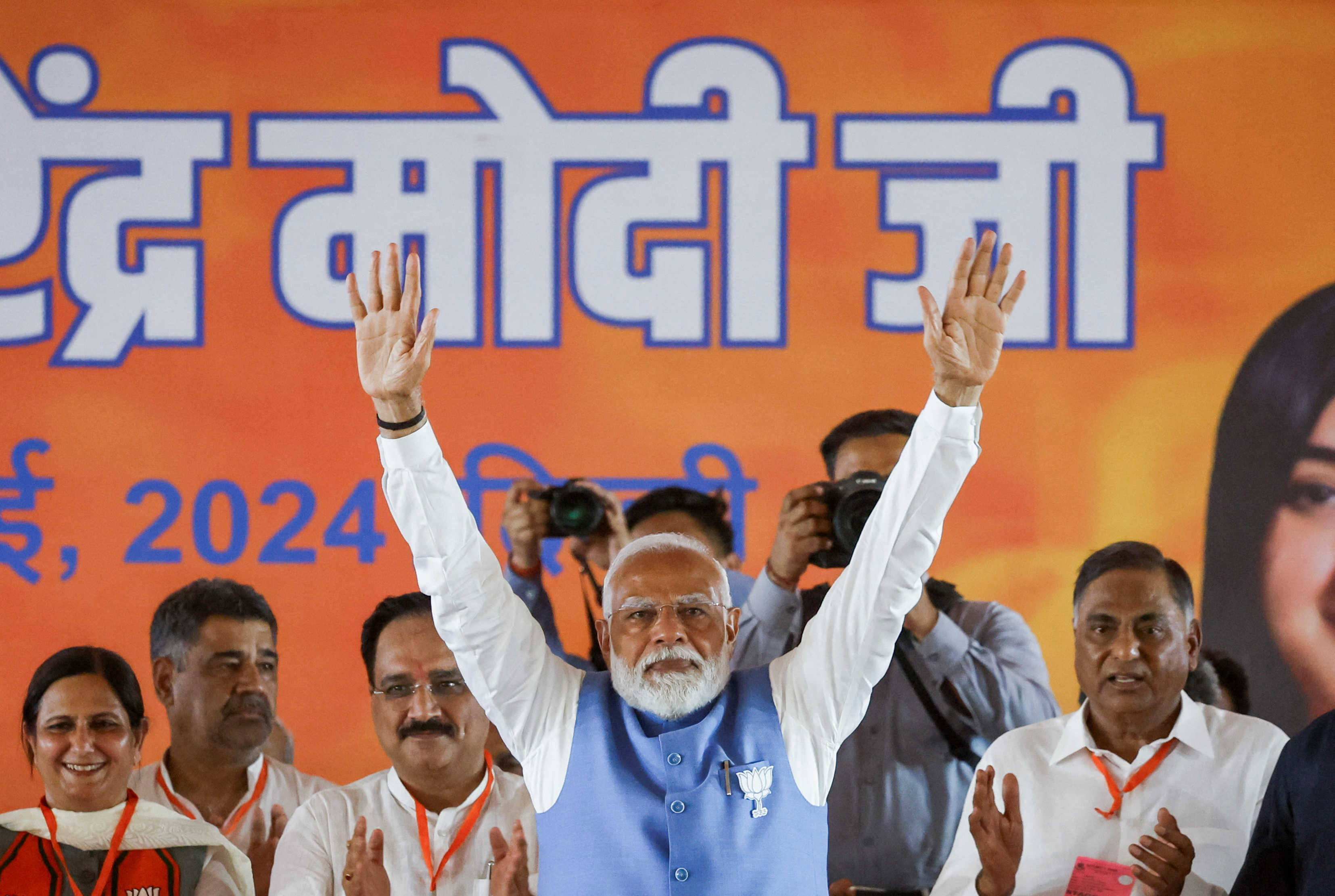
UNCERTAINTY LIFTED, ANALYSTS SAY
Sign up here.
Reporting by YP Rajesh and Krishn Kaushik; Additional reporting by Shivam Patel, Tanvi Mehta, Sakshi Dayal and Chris Thomas; Editing by Raju Gopalakrishnan and Giles Elgood
Our Standards: The Thomson Reuters Trust Principles. New Tab , opens new tab
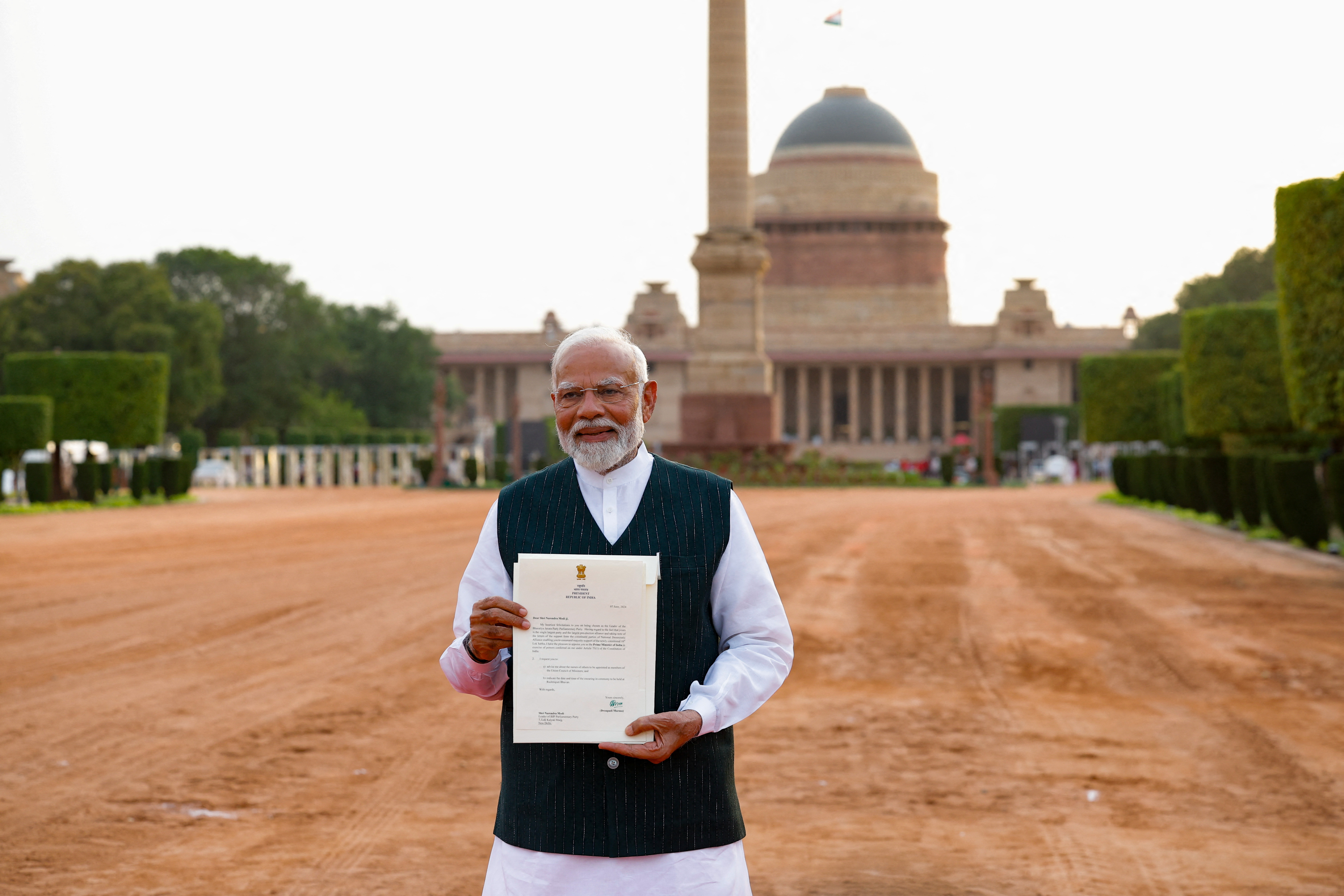
World Chevron
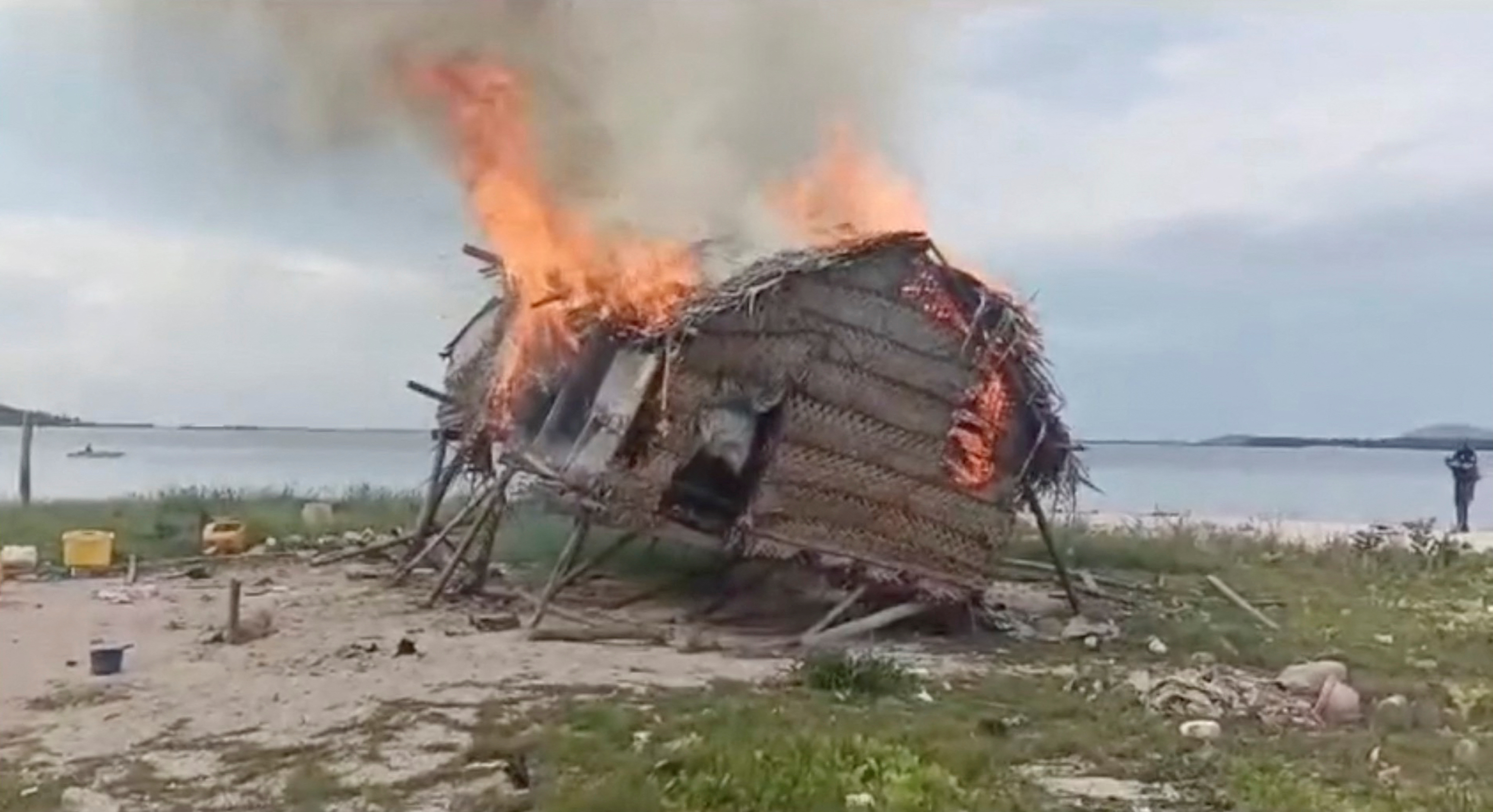
Malaysia defends eviction of sea nomads, citing security concerns
Malaysian authorities defended their decision to evict hundreds of sea nomads from their homes off the coast of Sabah state this week, saying it was aimed at boosting security and combating cross-border crime.

What to Know About India’s Enormous Election: How It Works and What’s at Stake
What’s set to be the largest election in history is wrapping up in the world’s largest democracy, with Prime Minister Narendra Modi vying for a third term. Here’s what you need to know.
India's Massive Election, Explained

Altaf Qadri | AP
People gather to vote during the first round of polling in India's national elections in Chennai, in the southern state of Tamil Nadu, on April 19. Voting for more than 500 seats in the country's lower house of Parliament wraps up on June 1.
- India's Modi Set for a Record Third Term, but Wings Clipped
- U.S. Expects Continued Close Ties, Human Rights Talks With India After Elections
- India's BJP Concedes Defeat in Ayodhya, Where Modi Opened Grand Ram Temple
- Analysis: A Humbled Modi Needs Allies and Answers to India's Unemployment, Inflation
Editor's note: The piece below was published ahead of the final phase of India's elections. Read on to learn more about the contest.
It’s expected to be the largest democratic vote in human history, and it takes place over a full six weeks: In April, nearly a billion eligible voters in India began casting ballots in the country’s general election, which will determine both its next prime minister and the makeup of its larger legislative body.
Did You Know?
There’s a lot at stake. For the past 10 years, India – which is roughly 80% Hindu but also home to some 200 million Muslims as well as Christians, Sikhs, Buddhists and other religious minorities – has been ruled by the Bharatiya Janata Party , a generally right-wing, socially conservative party that advocates for Hindu nationalism .
It’s a vision of India in which “Hinduism and Indian national identity are more or less synonymous,” as one South Asia scholar put it, and for years the BJP has been growing more forceful in rhetoric and policy, leading to criticism that it’s eroding democracy, persecuting minorities and violating human rights . In January, marking one of the country’s biggest religious controversies in recent memory, party leaders celebrated the opening of a new Hindu temple built atop the ruins of a historic mosque. Weeks later, the government implemented a new migrant citizenship law designed to exclude Muslims.
The World’s Most Populous Countries

The moves fall in line with a yearslong charge led by Narendra Modi , India’s popular – and populist – prime minister who is seeking a third term in this year’s election. Modi and his BJP are up against a coalition called the Indian National Developmental Inclusive Alliance, or INDIA, which is led by the Indian National Congress – the onetime party of Mohandes Gandhi and Pandit Nehru that held power for much of the 20th century. The coalition’s leaders say they’re running to save Indian democracy .
The final day of voting is Saturday, June 1, with results slated for counting on Tuesday, June 4. Here’s what else you need to know about the massive election in the world’s most populous country .
Who Is on the Ballot?

Manish Swarup | AP
K. Datta, 91, reviews a ballot paper before casting his vote from his home in New Delhi on May 17. To encourage and assist the elderly to vote, Indian authorities put in place a home voting program for the general elections.
Modi, of course, is by far the biggest name. The 73-year-old prime minister, who was born in the western state of Gujarat and formerly served as that state’s chief minister, now represents a parliamentary region that includes Varanasi – a northern city on the Ganges River that’s deeply important to Indian Hindus. Modi’s opponents for the Varanasi seat include Ajay Rai, a former BJP member who now represents the Congress party, and Athar Jamal Lari, a political veteran from the Bahujan Samaj Party, which aims to represent religious and other minorities.
But that’s just one race out of 543 to decide members of the Lok Sabha, the country’s lower and larger house of Parliament. (The country uses a “first past the post” system, where the candidate with the most votes wins the seat.)
In Uttar Pradesh – the country’s most populous state, which accounts for 80 Lok Sabha seats – one key race pits Akhilesh Yadav, leader of the socialist Samajwadi Party, against an incumbent from the BJP.
In Maharashtra, the heavily populated state that includes Mumbai, 48 seats are up for grabs, with candidates representing a mix of allegiances tied to major national parties as well as more regional parties like Shiv Sena, a far-right party founded in the 1960s as a reaction against migrants who were coming to the region from other Indian states.
In West Bengal, which includes Kolkata, a party called the All India Trinamool Congress – a breakaway from the Congress party – previously dominated but has been forced to grapple with the ascension of the BJP.
How Does Voting Work?

Polling officials carry electronic voting machines on the eve of the sixth phase of national elections in New Delhi on May 24.
India has broken the massive voting operation into seven different phases of one day each. The process kicked off on April 19, and various constituencies are allotted to each phase: Phase 4, for example, took place on May 13 and included races to represent more than 90 constituencies in nine of India’s 28 states, plus one territory. The election is poised to be India’s second-longest ever, following its first elections in the early 1950s, which lasted close to four months .
Voting is carried out with the help of millions of election workers and is generally electronic , though alternative postal ballots are available for some , including people with disabilities and older voters . The process is intensely local: Because India mandates that citizens not have to travel more than 2 kilometers – or 1.2 miles – to vote, workers sometimes trudge through rough or vast terrain to reach rural voters. That includes getting to the remote village of Malogam, near the country’s border with China, where a team of officials reportedly hiked roughly 40 kilometers to reach a single 44-year-old voter named Sokela Tayang .
India reportedly deployed hundreds of thousands of members of its federal security forces to keep the peace during voting and to help transport voting machines around the country.
What Major Issues Are at Play?

Muslims offer prayers at a mosque in New Delhi on April 11. Violence against Muslims, who account for 14% of the population, is common in India. The Associated Press reports Muslims have been lynched by Hindu mobs over allegations of eating beef or smuggling cows, an animal considered holy to Hindus. Their homes and businesses have been bulldozed , and their places of worship set on fire .
The issue of Hindu nationalism is central. So is what’s widely viewed as Modi’s increasing authoritarianism: Ahead of the election, the opposition Congress party had its bank accounts frozen by the Modi-led government, though the BJP countered the move was made due to tax evasion. Opposition leader Arvind Kejriwal , the chief minister of New Delhi, also was arrested on corruption charges and later released on bail. His stint in custody included a strange dispute involving mangoes and blood sugar levels.
Modi opponents claim the actions were politically motivated, and concerns persist that another Modi victory is likely to bring still more anti-democratic shifts for the world’s largest democracy, even as he boasts of helping the poor and wins followers with a savvy populism message.
Power has been centered “around the cult of the leader’s personality,” policy analyst Yamini Aiyar told The New York Times . And “the deep centralization of power has significantly undermined institutional checks and balances baked into India’s democratic structure.”
Another big issue is jobs and the economy: While the country’s gross domestic product and stock market have seen strong growth over the years, benefiting corporations and ushering many Indians into a better life, inequality remains stark, and many others are underemployed and destitute. The Congress party ahead of the election unveiled a platform that includes plans to create manufacturing jobs and implement a new cash transfer program for poor families. Modi, meanwhile, has sought to benefit in the election from his government’s expansion of welfare programs .
How Has Voting Gone So Far?

A woman checks the ink mark on her index finger after casting her vote in the general election in Agra, in the Indian state of Uttar Pradesh, on May 7.
In late April, voting in Manipur, a northeastern state that’s been wracked by Hindu-Christian ethnic tensions, was marred when armed men raided polling stations and damaged voting machines, prompting authorities to order a revote at 11 stations. Indian media also have reported violence in West Bengal, a state with a history of election clashes , as well as several violent incidents, including stone pelting, in Andhra Pradesh .
But much of the surrounding season has been peaceful and even exuberant, with supporters of various parties attending political rallies and roadshows . There’s a reason the weekslong vote has been called “a festival of democracy.”
India currently has around 970 million eligible voters. In 2019, the last year the country held Lok Sabha elections, it saw a figure closer to 900 million, and a record 67% ended up casting ballots.
This year’s turnout was on track to be at least a bit lower: As reported by The Times of India , the first three phases saw turnouts of around 66%, while the fourth phase reached a mark over 69%. Turnout then fell to 62% and 63% for the fifth and sixth phases, respectively, averaging out to about 65.5%. Voters notably have had to grapple with extreme heat amid the process.
An overall turnout of 66% this year, however, still would mean more voters overall than in 2019, making this the largest election in history.
Who’s Favored to Win?

Mahesh Kumar A. | AP
Bharatiya Janata Party supporters carry portraits of Prime Minister Narendra Modi as they attend a rally in Hyderabad, India, on May 10.
Modi and the BJP – potentially by a landslide. After securing a majority in the Lok Sabha in 2014 by winning 282 seats, Modi’s party improved on that total in 2019, winning 303 seats and securing dozens more through its allies.
This time around, the party has set its sights on securing 400 seats, which would allow it to further cement its grip on power and has been tied to speculation that it might try to change the country’s constitution .
Analysts expect Modi and the BJP to indeed secure another victory, though lower turnout, potential apathy and stronger-than-expected opposition could make such a supermajority less likely.
Join the Conversation
Tags: India , elections , world news , politics , Best Countries
Recent Articles
Best countries.

National News

Best Countries Rankings
- # 1 Switzerland
- # 5 Australia
- # 5 United States
Health News Bulletin
Stay informed on the latest news on health and COVID-19 from the editors at U.S. News & World Report.
Sign in to manage your newsletters »
Sign up to receive the latest updates from U.S News & World Report and our trusted partners and sponsors. By clicking submit, you are agreeing to our Terms and Conditions & Privacy Policy .
You May Also Like
Switzerland is world's best country.
Julia Haines Sept. 6, 2023

Photos: Best Countries Around the World
Sept. 6, 2023

The 25 Best Countries in the World
Elliott Davis Jr. Sept. 6, 2023

South Korea's Young Shamans Revive Ancient Tradition With Social Media
Reuters June 7, 2024

U.N. Agency Appeals for Aid to Help Haiti Weather Hurricane Season

Advertisement
Supported by
Climate Change Added a Month’s Worth of Extra-Hot Days in Past Year
Since last May, the average person experienced 26 more days of abnormal warmth than they would have without global warming, a new analysis found.
- Share full article

By Raymond Zhong
Over the past year of record-shattering warmth, the average person on Earth experienced 26 more days of abnormally high temperatures than they otherwise would have, were it not for human-induced climate change, scientists said Tuesday.
The past 12 months have been the planet’s hottest ever measured, and the burning of fossil fuels, which has added huge amounts of heat-trapping gases to the atmosphere, is a major reason. Nearly 80 percent of the world’s population experienced at least 31 days of atypical warmth since last May as a result of human-caused warming, the researchers’ analysis found.
Hypothetically, had we not heated the globe to its current state , the number of unusually warm days would have been far fewer, the scientists estimated, using mathematical modeling of the global climate.
The precise difference varies place to place. In some countries, it is just two or three weeks, the researchers found. In others, including Colombia, Indonesia and Rwanda, the difference is upward of 120 days.
“That’s a lot of toll that we’ve imposed on people,” said one of the researchers who conducted the new analysis, Andrew Pershing, the vice president for science at Climate Central, a nonprofit research and news organization based in Princeton, N.J., adding, “It’s a lot of toll that we’ve imposed on nature.” In parts of South America and Africa, he said, it amounts to “120 days that just wouldn’t be there without climate change.”
Currently, the world’s climate is shifting toward the La Niña phase of the cyclical pattern known as the El Niño-Southern Oscillation. This typically portends cooler temperatures on average. Even so, the recent heat could have reverberating effects on weather and storms in some places for months to come. Forecasters expect this year’s Atlantic hurricane season to be extraordinarily active, in part because the ocean waters where storms form have been off-the-charts warm.
The analysis issued Tuesday was a collaboration between several groups: Climate Central, the Red Cross Red Crescent Climate Centre and World Weather Attribution, a scientific initiative that examines extreme weather episodes. The report’s authors considered a given day’s temperature to be abnormally high in a particular location if it exceeded 90 percent of the daily temperatures recorded there between 1991 and 2020.
The average American experienced 39 days of such temperatures as a result of climate change since last May, the report found. That’s 19 more days than in a hypothetical world without human-caused warming. In some states, including Arizona and New Mexico in the Southwest and Washington and Oregon in the Northwest, the difference is 30 days or more, a full extra month.
The scientists also tallied up how many extreme heat waves the planet had experienced since last May. They defined these as episodes of unseasonable warmth across a large area, lasting three or more days, with significant loss of life or disruption to infrastructure and industry.
In total, the researchers identified 76 such episodes over the past year, affecting 90 countries, on every continent except Antarctica. There was the punishing hot spell in India last spring. There was the extreme heat that worsened wildfires and strained power grids in North America, Europe and East Asia last summer. And, already this year, there has been excessive warmth from Africa to the Middle East to Southeast Asia .
Raymond Zhong reports on climate and environmental issues for The Times. More about Raymond Zhong
Our Coverage of Climate and the Environment
News and Analysis
With the planet in the grips of its highest temperatures in more than 100,000 years, scientists with the U.N. weather agency have crunched the numbers and come to a stark conclusion: More record-hot years are all but inevitable .
Leaders in Alameda, Calif., voted to stop scientists from testing a cloud-brightening device that might one day be used to artificially cool the planet , overruling city staff members who had found the experiment posed no danger.
Human-caused warming has doubled the chances that southern Brazil will experience extreme, multiday downpours like the ones that recently caused disastrous flooding there, a team of scientists said.
Adopting Orphaned Oil Wells: Students, nonprofit groups and others are fund-raising to cap highly polluting oil and gas wells abandoned by industry.
Struggling N.Y.C. Neighborhoods: New data projects are linking social issues with global warming. Here’s what that means for five communities in New York .
Biden Environmental Rules: The Biden administration has rushed to finalize 10 major environmental regulations to meet its self-imposed spring deadline.
F.A.Q.: Have questions about climate change? We’ve got answers .

IMAGES
VIDEO
COMMENTS
apparent in the 21 st century when the world is ravaged by violence, threatened by polarization and above all, dried up through a severe cultural and social penury. No one person or nation or an organization can bring peace in the world. India offers the best hope for world peace today. Our generation has to find ways how to live in peace.
In Chinese, for example, the word heping denotes world peace, or peace among nations, while the words an and mingsi denote an "inner peace," a tranquil and harmonious state of mind and being, akin to a meditative mental state. Other languages also frame peace in its "inner" and ... war in ancient India, in which one of the principal ...
World Peace: Essay on World Peace. Category: Essays and ParagraphsOn November 22, 2018 By Mary. World peace. World peace can be referred to as the state of people from all countries in the world being happy and living harmoniously with each other. World peace creates one international community that can concentrate on greater issues that are ...
A nuclear disarmament symbol, commonly called the "peace symbol". World peace is the concept of an ideal state of peace within and among all people and nations on Planet Earth.Different cultures, religions, philosophies, and organizations have varying concepts on how such a state would come about. Various religious and secular organizations have the stated aim of achieving world peace through ...
United Nations and World Peace Essay. Exclusively available on IvyPanda®. United Nations is an international organization that unites world countries in the common goal to ensure peace and human rights. Even thought it was formed after the Second World War, its peacekeeping efforts have been somewhat limited, as has been proven by a great ...
India's policy is to live peacefully and promote peace among nations, which is backed by numerous influential principles. The following are: Non-alignment is a concept that refers to not aligning with any specific group or allegiance. (2) The concept of peaceful co-existence. (3) Economic and cultural cooperation,
India World Opinion Elections e-Paper Cricket ... In the India of my dreams, there will be peace and harmony. Every citizen will be literate. ... essays / Young World Top News Today. 0 / 0.
India's resurgence has renewed global interest in the geopolitical implications of India's economic rise. Sanjaya Baru's book explores India's evolving geoeconomic relations with the West and with Asia, particularly China, in the aftermath of the global financial crisis of 2008-09. These essays analyse the influence of business and trade on ...
New Delhi [India], June 7 (ANI): Ukrainian Ambassador, Oleksandr Polishchuk on Friday highlighted India's global standing as the leader of the Global South ahead of the peace conference in Switzerland aimed at helping chart a path toward peace in Ukraine and said that the war-torn nation need India in the peace-building process. While speaking to […]
Among its top priorities, the BJP aims to make India the third-largest economy by 2027 and cement its status as a global leader. Indian Prime Minister Narendra Modi arrives in New Delhi, India ...
3. The total number of people who died during the first world war was 8538315. 4. In the 1990s, civil wars killed 5 million people worldwide. 5. 500 million small arms are in circulation around the world. 6. In the 1990s, wars and internal conflicts forced 50 million people to flee from their homes.
Essay on India (100 Words) India is a well-known country in the world. Our country is situated in the southern part of the Asian continent. India is a densely populated country that is also well-protected from all sides. This country is well-known throughout the world for its rich culture and traditional values.
57.3 Principles and Methods of World Peace. Sanderson (1982) suggested nineteen principles of world peace which include: 1. the earth is one world and its human beings must learn to live in peace ...
According to the Stockholm International Peace Research Institute, the estimated nuclear warhead count for the top five countries with the most nuclear weapons in 2020, based on available ...
NEW DELHI (AP) — Fresh from declaring victory in India's election, Prime Minister Narendra Modi offered few details on the agenda for his third term, but went out of his way to underline he ...
Peace and Harmony Essay 3 (400 words) Peace and harmony is very important for the smooth functioning of any society. In order to give a safe and secure environment to its citizens, the government of India takes steps to maintain peace in the country. However, often, it is disrupted due to different social, political and economic factors.
India, despite its status as the world's most-populous democracy, has been a poster child for this decline under Modi: His government has taken aim at just about every form of freedom. He has ...
ASEAN role in Indo-Pacific: Central to Modi's speech always is the Association of Southeast Asian Nations (Asean) unity, which he says was essential for a stable future for the region and that Asean lies at the heart of the new Indo-Pacific. India's stress on the centrality and unity of Asean for securing the region and maintaining a rules-based order is important.
Inner Peace, World Peace is the first work in any western language to examine the Buddhist approach to nonviolence. Well-known Buddhist scholars, a noted authority on nonviolent struggle, a prominent Thai Buddhist activist, and other leaders in their fields collaborate to show the contemporary relevance of the Buddhist tradition.
The International Day of Peace ("Peace Day") is observed around the world each year on 21 September. Established in 1981 by unanimous United Nations resolution, Peace Day provides a globally shared date for all humanity to commit to Peace above all differences and to contribute to building a Culture of Peace. This is a long-established ...
Updated 3:06 PM PDT, June 5, 2024. NEW DELHI (AP) — The United States, Russia, China, and other nations sent their congratulations Wednesday as Indian Prime Minister Narendra Modi's government began preparations for his swearing-in for a record third term following the world's largest democratic election. Modi's Hindu-nationalist ...
A symbol of religious and social/communal harmony. Religious harmony in India is a concept that indicates that there is love, affection between different religions throughout the history of the Indian subcontinent.In the modern-day Republic of India, the Indian constitution supports and encourages religious harmony. In India, every citizen has a right to choose and practice any religion.
Plus: Trump's dangerous revenge plan. Elections around the world. A decent peace for Gaza.
Mr. Modi has towered over India since first sweeping to power in 2014. He is now diminished. In the 2019 elections, his party won 303 of the 543 seats. His government, which also included 50 ...
The two teams boast some of the world's best players — India's Virat Kohli and Rohit Sharma and Pakistan's Babar Azam. Fans will draw on a history of more than 200 matches between the teams.
Todays news. Ahimsa Vishwa Bharti organisation established by Ambassador of Peace, Eminent Jainacharya Dr Lokeshji will establish India's first World Peace Center in Gurugram, Haryana. For this, the Haryana Government has allotted a plot to the organization in Sector 39 of Gurugram opposite Medanta Hospital and adjacent to Delhi-Jaipur Highway.
A series of four international conferences aiming at a peaceful resolution of the February 2022 Russian full-scale invasion of Ukraine preceded the planned June 2024 Swiss conference. [6] [3] On 24 June 2023, the first meeting was held in Copenhagen, including representatives from Ukraine, G7 states, the European Union (EU), India, South Africa ...
But the party ran into a spirited campaign by the "INDIA" alliance, ... US encourages China to attend peace summit on Ukraine World category · June 6, 2024 · 7:14 PM UTC · ago.
This year's turnout was on track to be at least a bit lower: As reported by The Times of India, the first three phases saw turnouts of around 66%, while the fourth phase reached a mark over 69% ...
"That's a lot of toll that we've imposed on people," said one of the researchers who conducted the new analysis, Andrew Pershing, the vice president for science at Climate Central, a ...